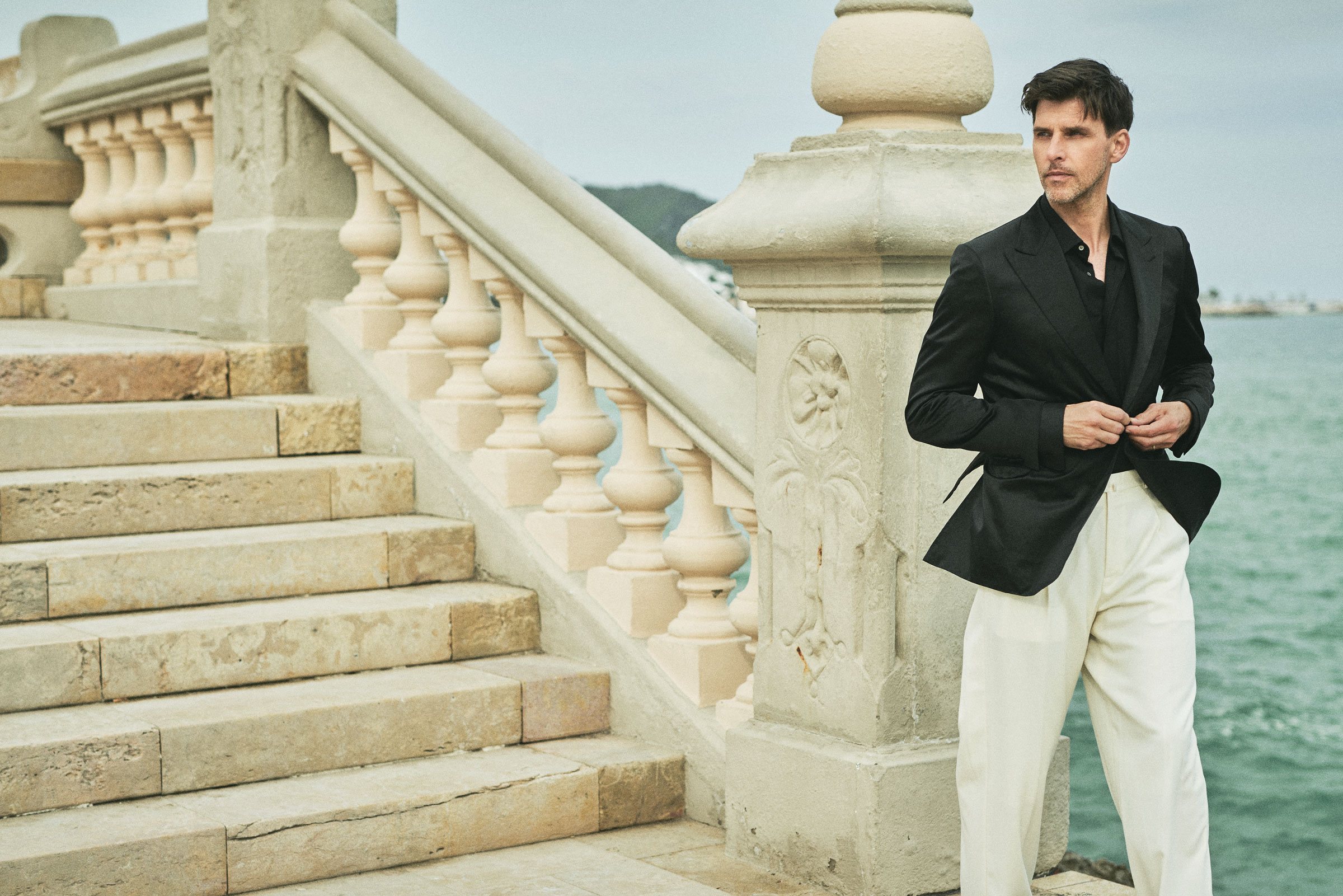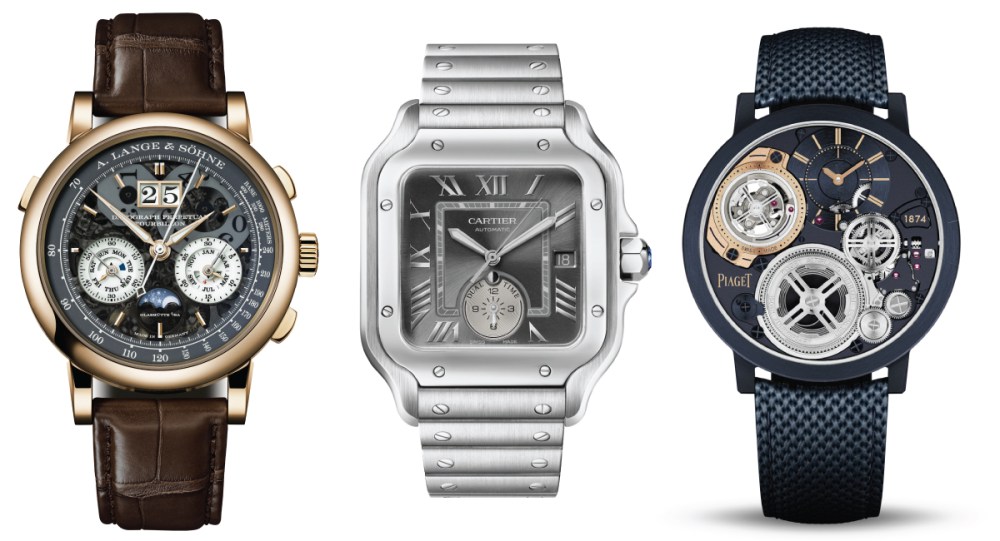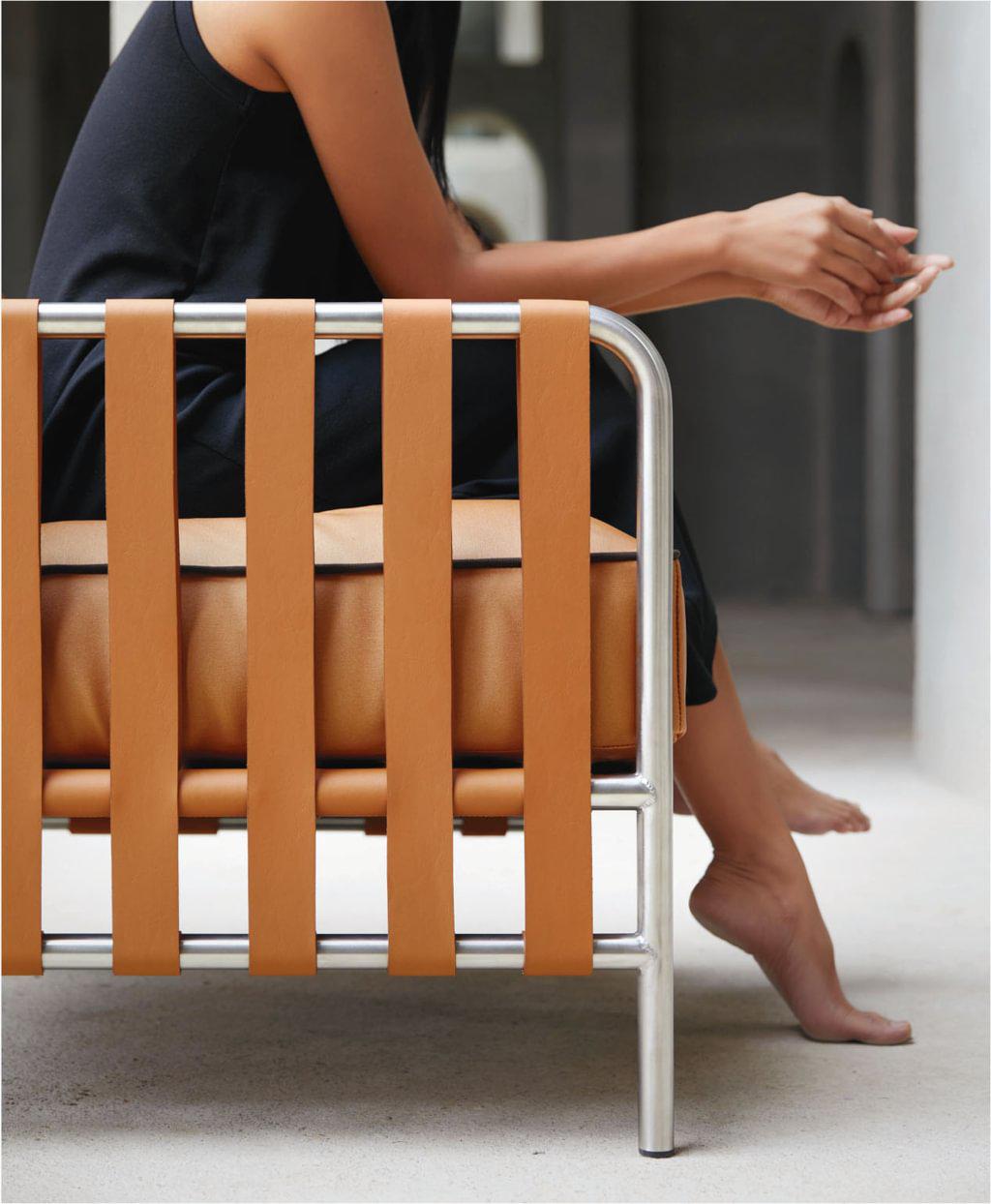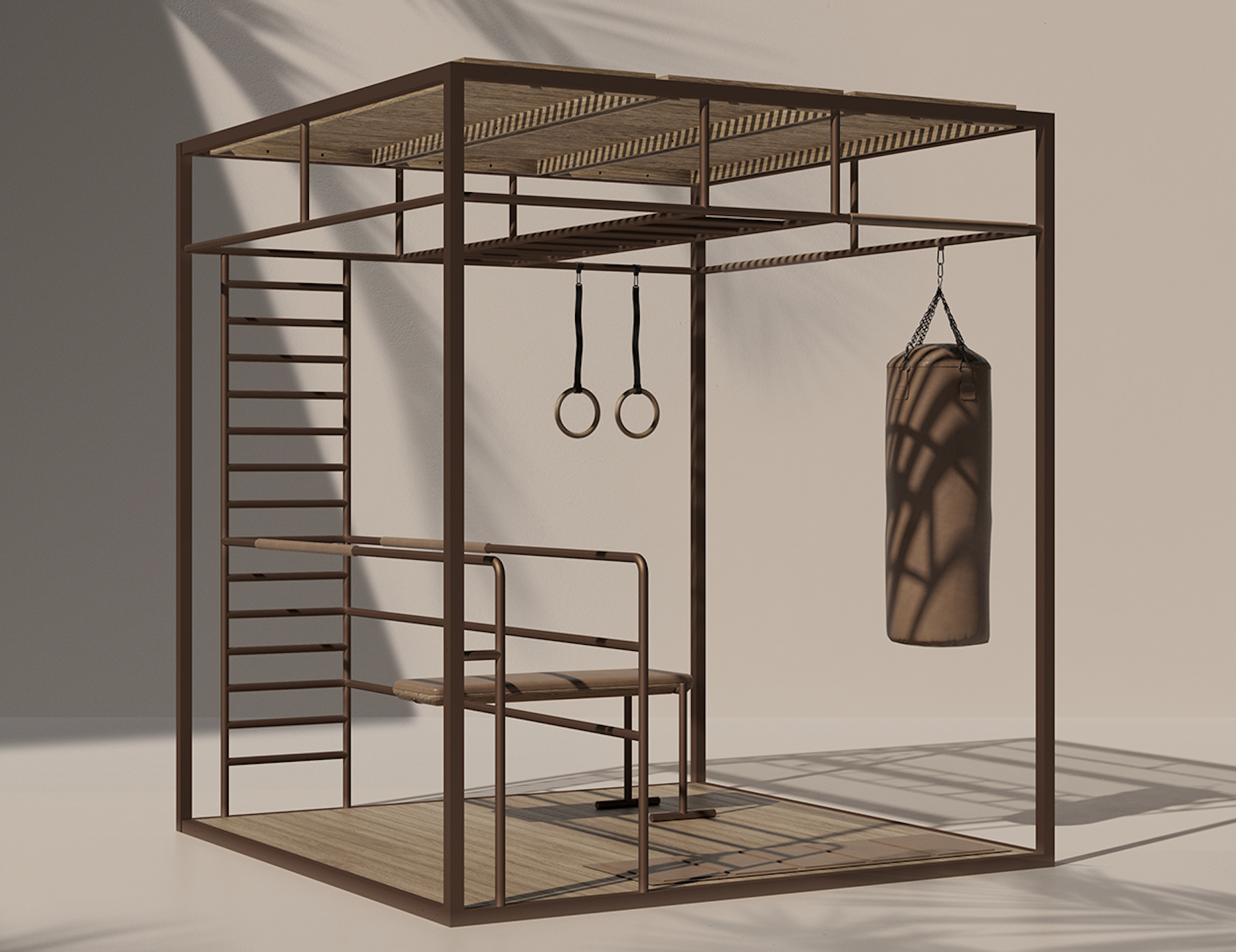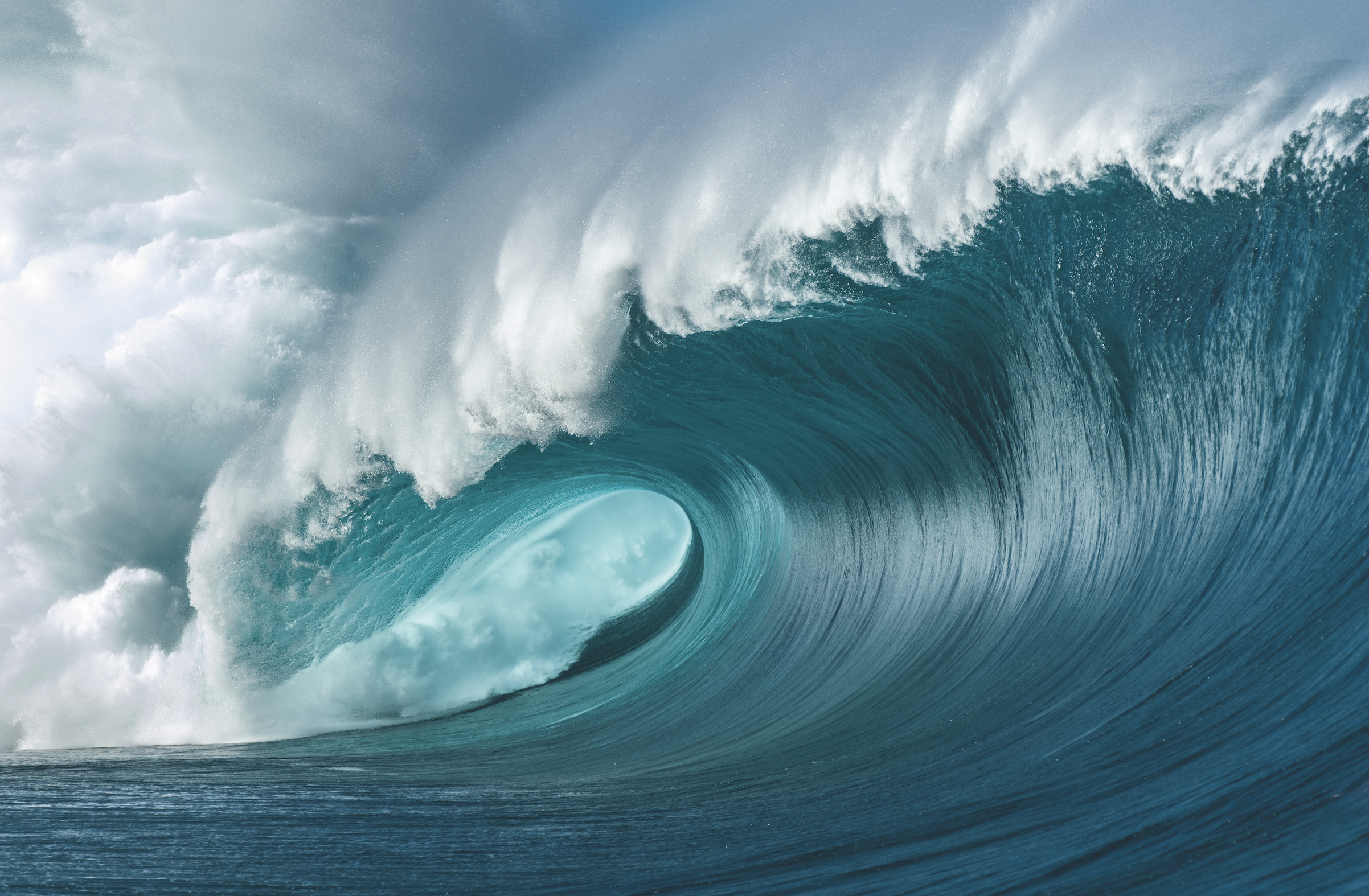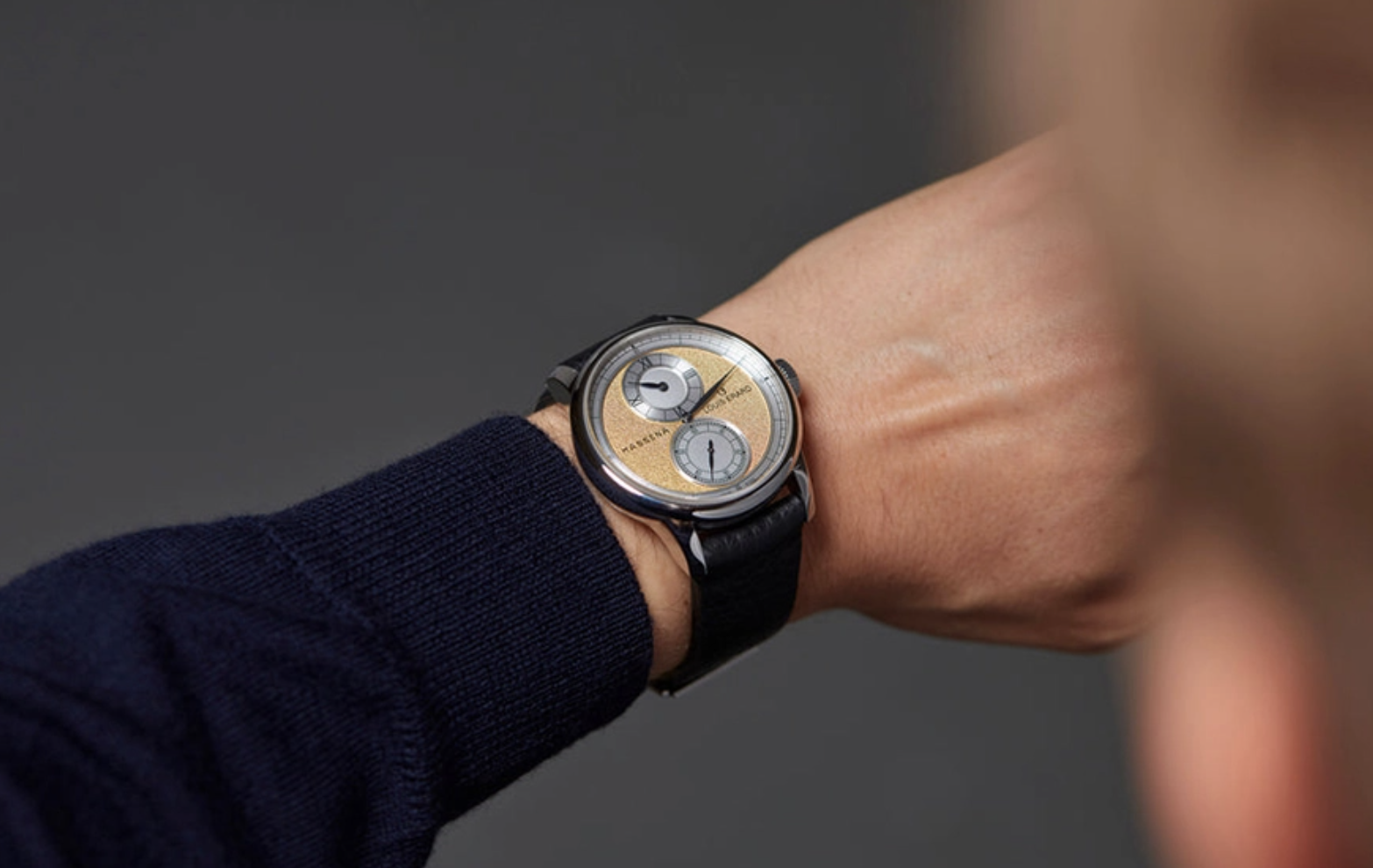
The 5 Best Watch Collaborations Of 2022 (So Far)
Fair warning: You are almost certainly going to have to scour secondary channels to find these sought-after timepieces.
Related articles
Over the past few years, Swiss watchmakers have begun to give outsiders creative license with their timepieces. Driven by the desire to infuse their watches with novelty and a fresh point of view, they have partnered with like-minded companies and individuals to create limited edition watches infused with two, or even three, sets of DNA.
During the pandemic, the collaboration concept seemed to reach its pinnacle when MB&F and H. Moser & Cie. introduced two watches, the Endeavour Cylindrical Tourbillon H. Moser x MB&F and the Legacy Machine 101 MB&F x H. Moser, featuring elements signature to each watchmaker.
As you’ll see, however, Moser has continued its collaborative streak — as have its cohorts in the luxury watch world. Just last week, De Bethune announced that it had teamed with HG Timepiece, the Swiss company that develops and sells timepieces designed by famed industrial designer Marc Newson, to create the blue polished steel nanoballs that fill his iconic hourglass.
Below, we highlight the five best collaborations to emerge from the Swiss watch trade since the start of 2022.
Moser & Cie. x The Armoury

H. Moser & Cie x The Armoury Endeavour Small Seconds Total Eclipse H. Moser & Cie x The Armoury
Announced in mid-January and long since sold out, the Endeavour Small Seconds Total Eclipse by H. Moser & Cie. and The Armoury, the New York- and Hong Kong-based menswear brand founded by Mark Cho and Alan See, is a study in minimalist adornment. While the watch features a dial made of Vantablack — the darkest man-made substance on earth, a Moser specialty — previous versions lacked the red gold or steel indices that distinguish The Armoury piece. Also new are the Breguet hands and seconds subdial and the 38mm casing — available in both steel and red gold. “As beautiful as a dress watch can get” is how collector Gary Shteyngart described it to Robb Report. $36,970; watches.thearmoury.com
Bremont x Bamford

Bremont S500 Bamford Special Edition Bremont
Naoya Hida x The Armoury

The Armoury x Naoya Hida & Co. Lettercutter Watch The Armoury
An ode to the skilled artisans who carve designs into stone, the Naoya Hida Type 2C-1 “Lettercutter” for The Armoury features a custom-drawn Art Deco-inspired typeface on its thick German silver dial. Unveiled in mid-May, the watch, the first collaborative project by the Japanese luxury watch manufacturer, comes in a 37 mm stainless steel case inspired by midcentury case designs. What truly elevates the piece, however, are its hand-carved indexes, hand-filled with Japanese cashew ink, a synthetic blue lacquer. With only 10 examples produced this year, the Type 2C-1 “Lettercutter” for The Armoury was sold through an allocation lottery that has since closed. $19,000; watches.thearmoury.com
Louis Erard x Massena LAB

Le Régulateur Louis Erard x Massena LAB Massena LAB
The new Le Régulateur Louis Erard x Massena LAB — available in two dial variants, gold or rhodium, of 178 pieces each — is a throwback to a time when navigators relied on timepieces to sail home. “They look very 18th century, very sober — they look like marine chronometers,” Massena LAB founder William Massena told Robb Report in May, shortly before the wristwatches were introduced. Housed in a 42mm polished stainless steel case, the watches are distinguished by their elegant double-signed dials, which display hours, minutes and seconds, divided over three registers with hours at 12 o’clock, central minutes, and small seconds at 6 o’clock. Equipped with the automatic Sellita calibre SW266-1, the Le Régulateur Louis Erard x Massena LAB features a custom rotor, visible through its display caseback, bearing the Louis Erard signature. approx. $5640; massenalab.com
Zenith x Kari Voutilainen x Phillips

Zenith x Kari Voutilainen Calibre 135 Observatoire Limited Edition Zenith.
Earlier this month, a Swiss watch brand, an auctioneer and a celebrated independent watchmaker walked into a bar… and came out with the Calibre 135 Observatoire Limited Edition, a contemporary chronometer powered by a historic caliber and produced in a limited edition of 10 pieces. The one-of-a-kind, three-way collaboration began when Phillips’ Aurel Bacs and Alexandre Ghotbi invited the watchmaker Kari Voutilainen to restore and hand-decorate a batch of Zenith Calibre 135-O movements. Originally produced between 1950 and 1954, the movements, all of which actually took part in and won observatory chronometer competitions, are now housed in 38mm platinum cases featuring a slightly domed black dial in sterling silver handmade at Voutilainen’s Comblémine atelier. The face of each watch is set with triangular hour markers and applied dot markers with contrasting solid gold hands, and the oversized second counter at 6 o’clock is inscribed with the movement’s serial number, proof of its uniqueness. Priced at 132,900 Swiss francs, the Zenith Calibre 135 Observatoire is exclusively sold by Phillips. approx. $190,630; zenith-watches.com
Subscribe to the Newsletter
Recommended for you
Shifting into Neutral
How to Rock a Neutral Selection of Menswear This Autumn.
By Zeb Daemen
April 18, 2024
The Boldest, Most Exciting New Timepieces From Watches & Wonders 2024
Here are the highlights from the world’s biggest watch releases of the year.
You may also like.
You may also like.
Shifting into Neutral
How to Rock a Neutral Selection of Menswear This Autumn.
Model, designer and international jet-setter Johannes Huebl dons autumn’s most refined looks and shares his style insights gleaned from years in front of the camera. Styled by Alex Badia and photographed by Feb Daemen in Barcelona, Huebel’s simple advice rings true.
“I like a natural colour palette and wear monochrome a lot. I tend to stick to no more than two textures in an outfit: a cashmere overshirt and corduroy trousers, for example,” says Huebel, reflecting on his signature style which is captured well in this Autumnal photoshoot.
“Attitude—and a fashionably relaxed mindset— is the secret to wearing clothes like these. The comfort and quality put me at ease.”
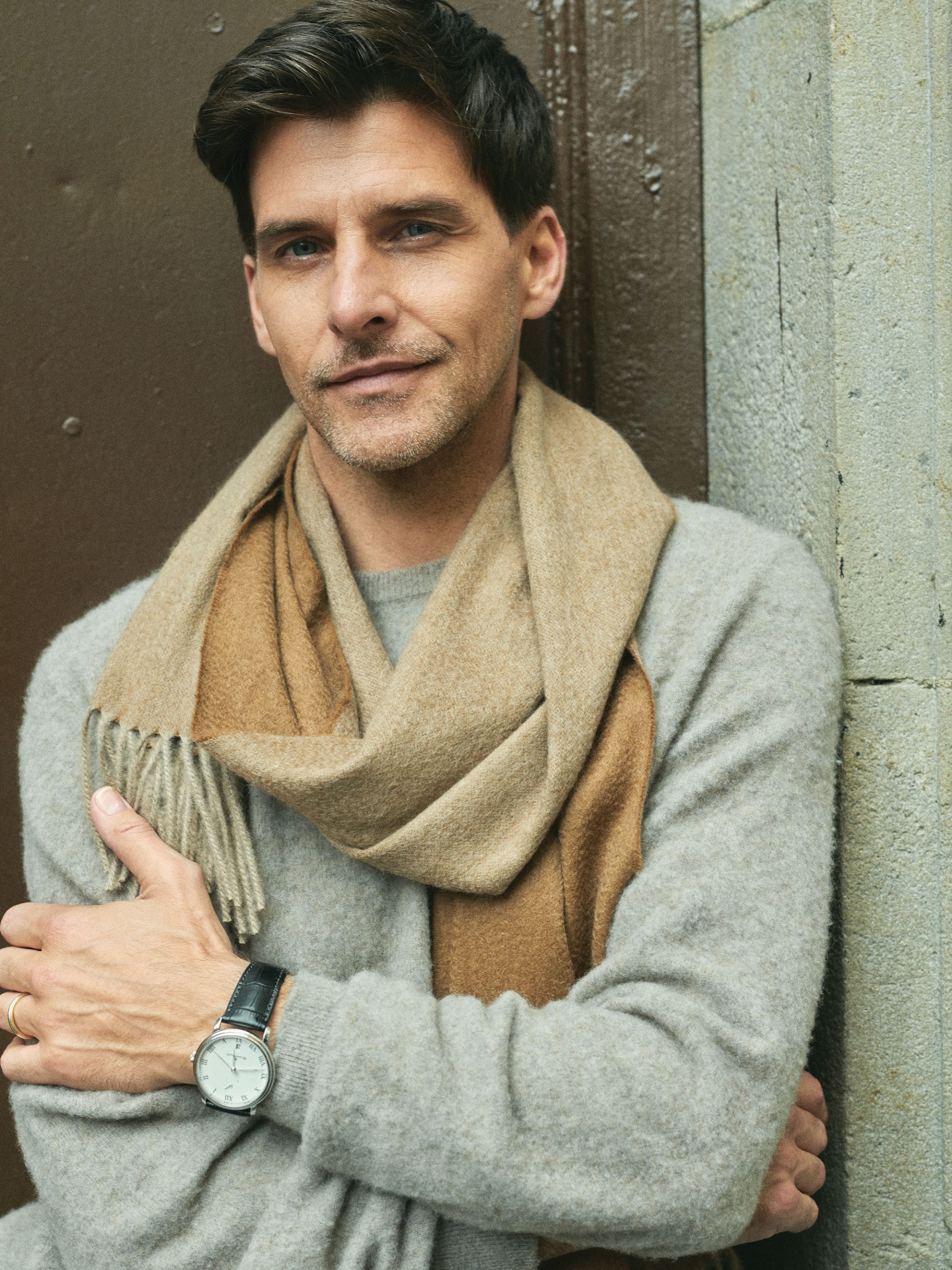
Massimo Alba hand-brushed-cashmere sweater, $1,440; Begg & Co cashmere scarf, $870; preowned Blancpain Villeret watch $34,720
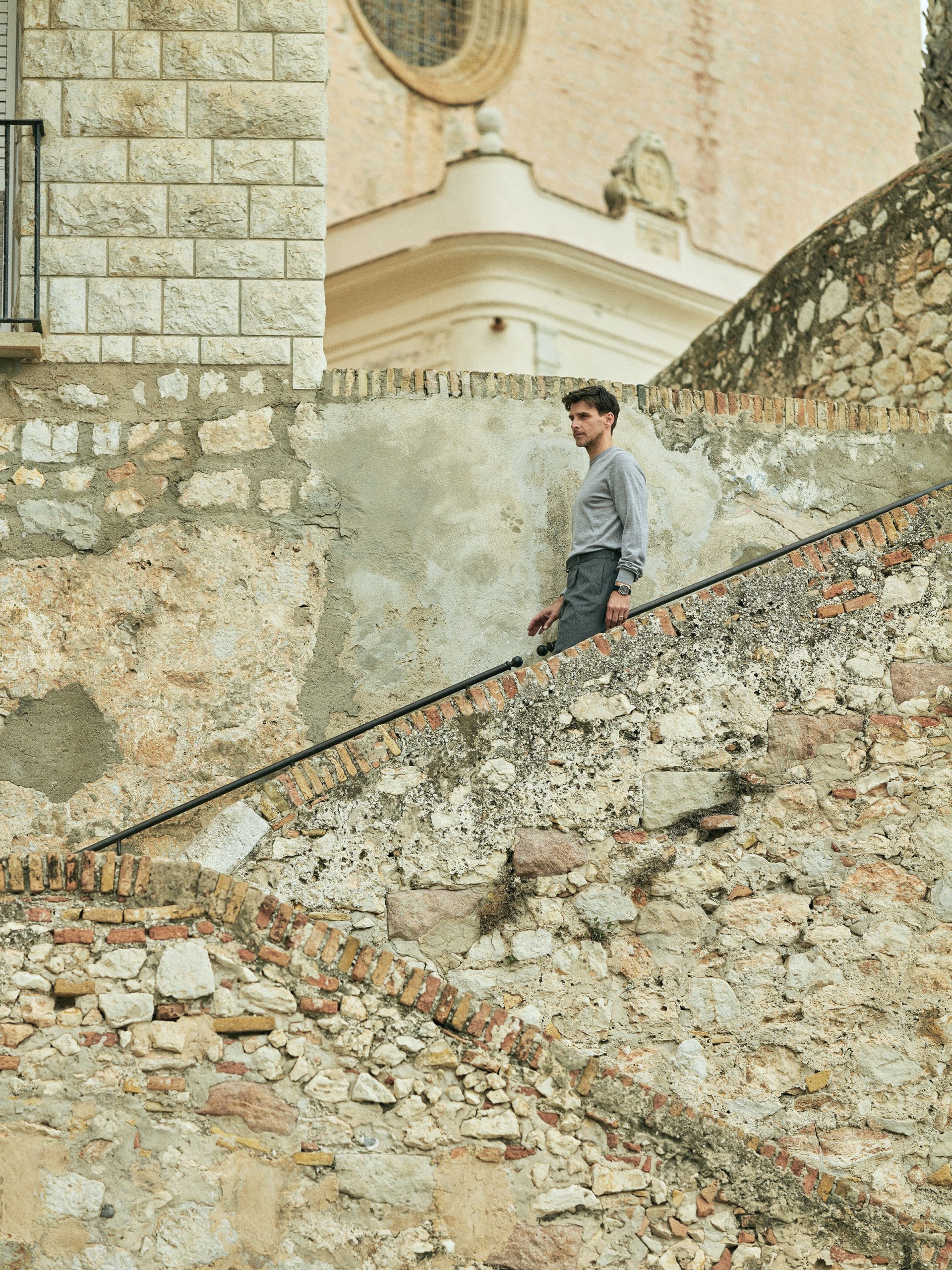
L.B.M 1911 wool sweater, $595; Officine Générale wool pants, $995.

Kiton cashmere and silk overshirt, $10,065; Ahlem acetate sunglasses, $780; Rolex x Bamford Watch Department watch (model’s own)
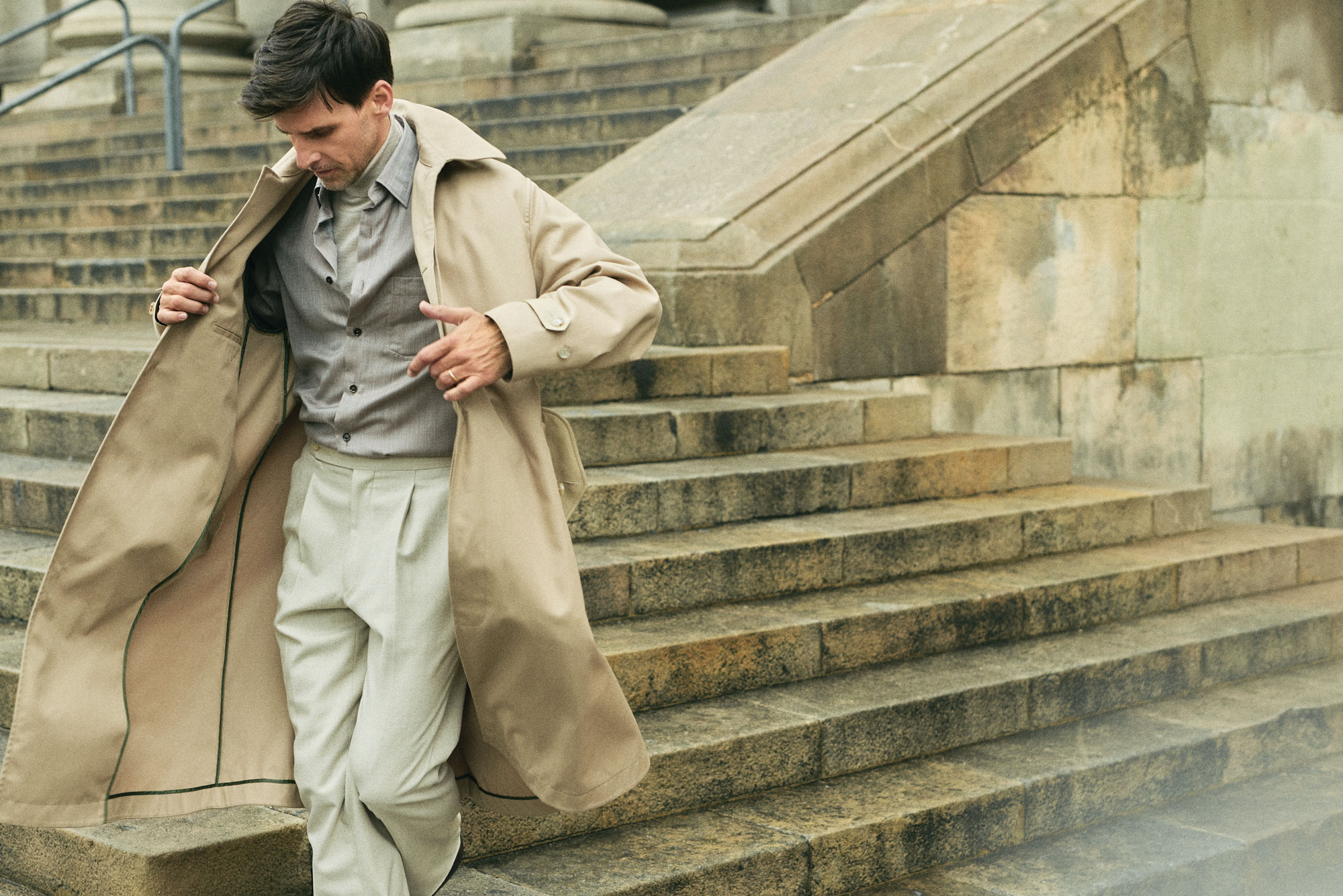
Bally cotton and poly trench, $3,605; Brioni cashmere and silk shirt, $5,895, and cashmere and silk turtleneck, $2,380: Stòffa wool pants, $795.
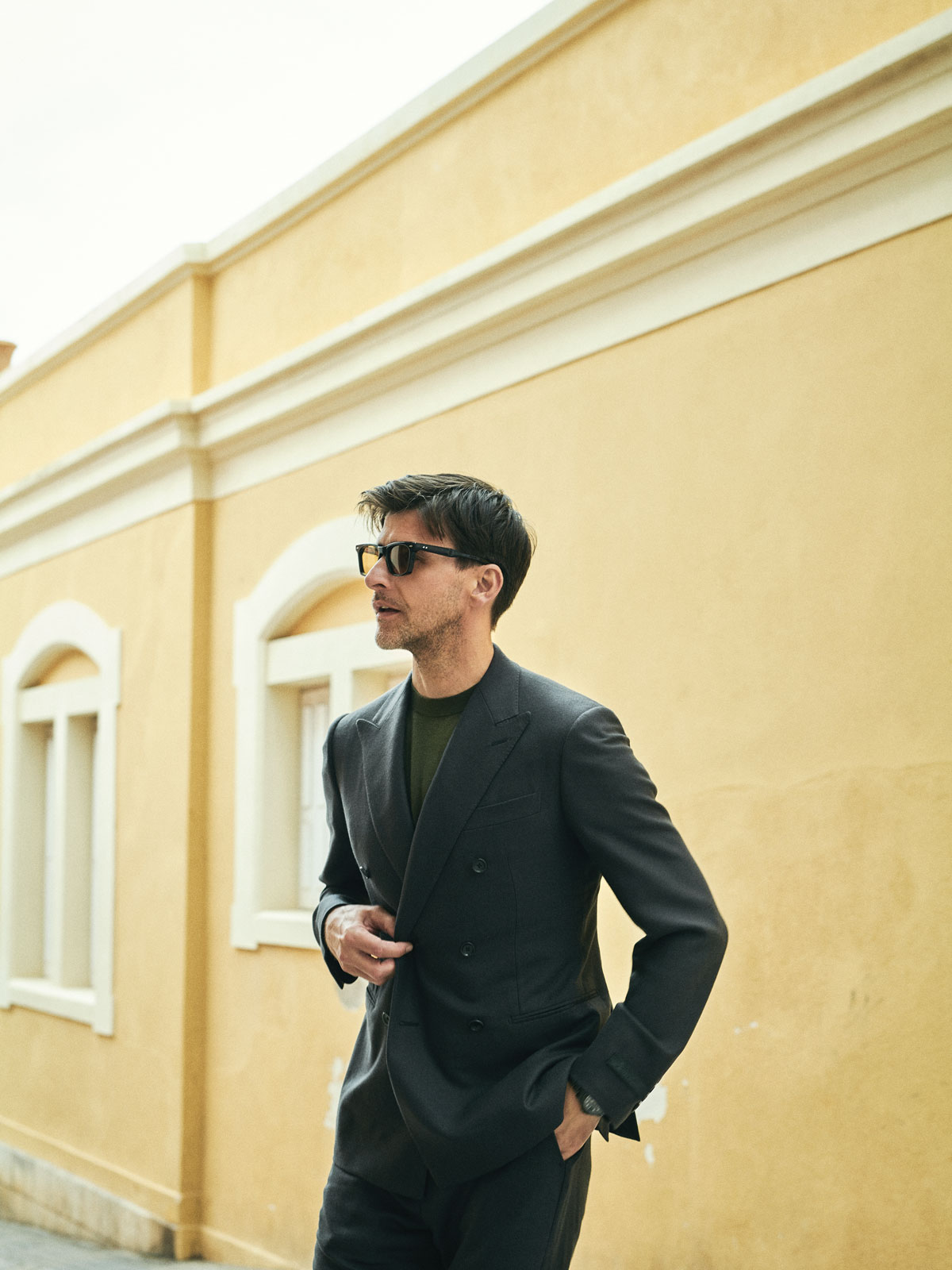
Louis Vuitton wool double- breasted Pont Neuf suit jacket, $5,215, and wool cigarette pants, $1,650; Connolly cashmere and silk T-shirt, $680; Jacques Marie Mage sunglasses, $1,210.
“My most valuable hacks: get your trousers hemmed so they fit right, avoid anything too tight, and align your colour palette. And don’t overthink it—a dark-navy suit never fails.”
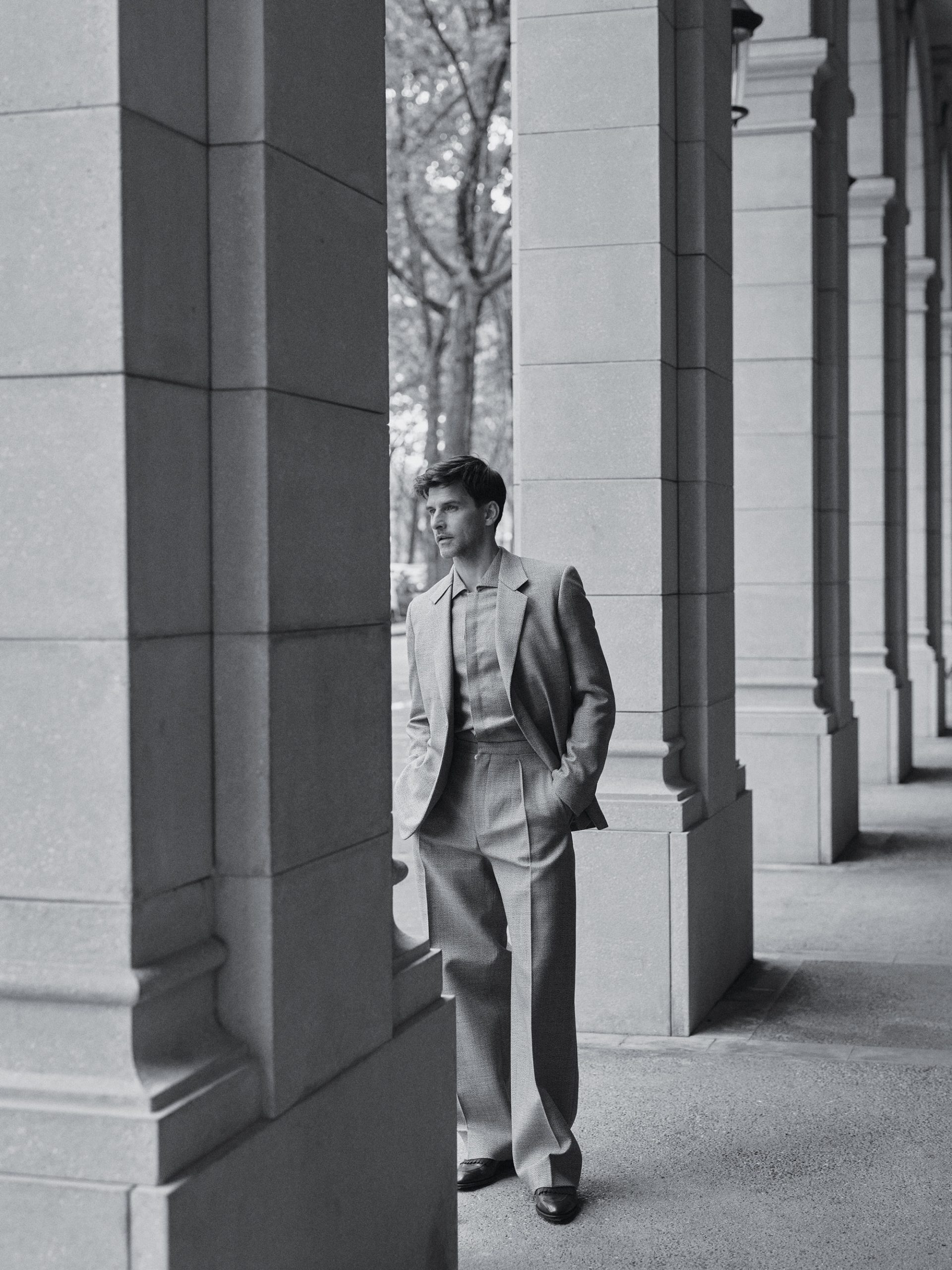
Altea technical-wool jacket, $1,300; Officine Générale cotton shirt, $430.
“Proportion and fit are all-important.I’ve learned that from designers and tailors over the last 20 years.”
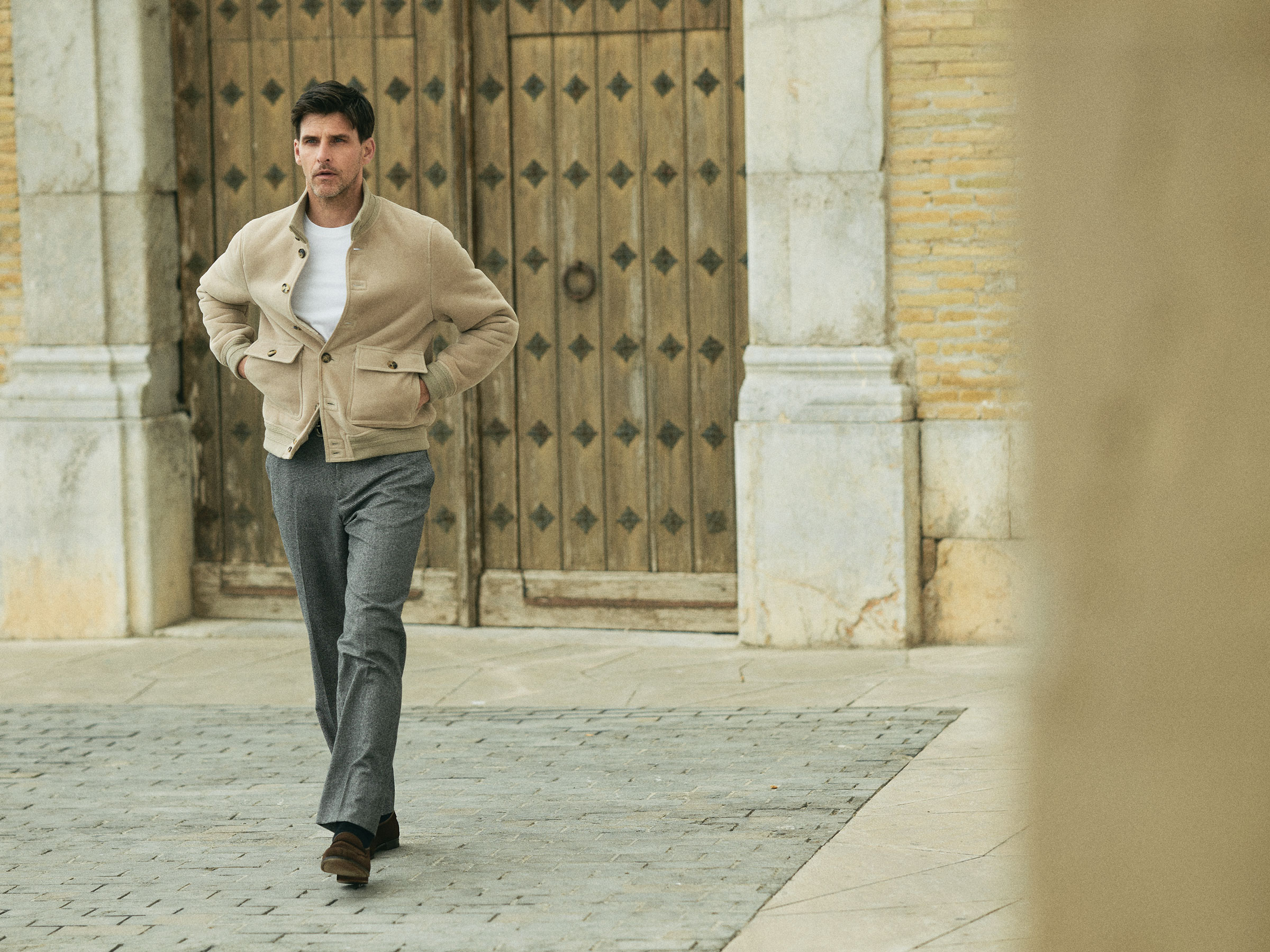
Valstar suede jacket, $4,050; Louis Vuitton cotton T-shirt, $855; Lardini wool and cashmere pants, $1,275; John Lobb suede loafers, $2,720.
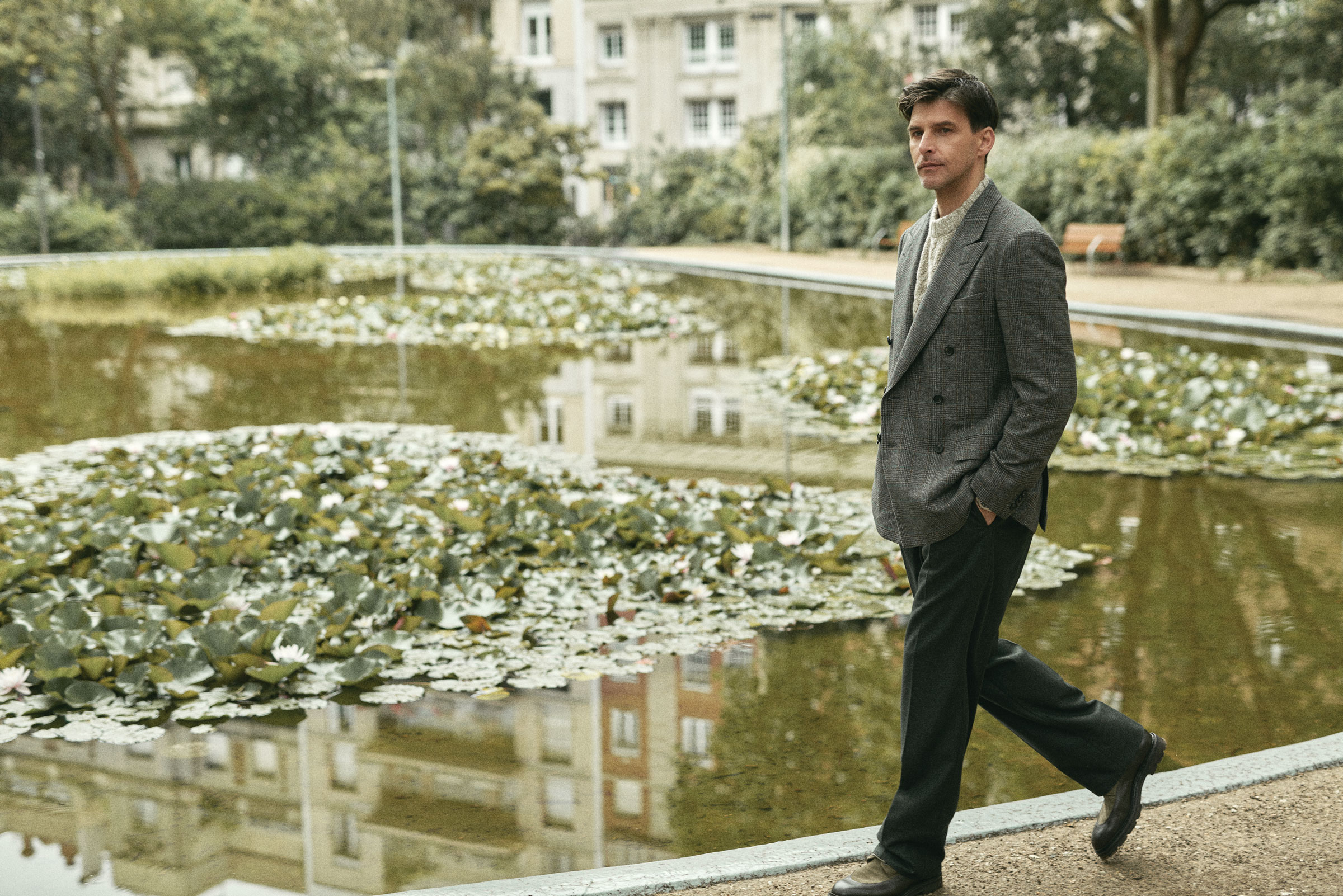
Loro Piana blazer, $7,560, sweater, $2,495, and pants, $2,190, all in cashmere and wool; John Lobb leather boots, $2,995.

Zegna shetland-wool jacket, $5,215, shetland-wool shirt, $6,275, and pure-wool pleated trousers, $2,250; John Lobb suede loafers, $2,720.
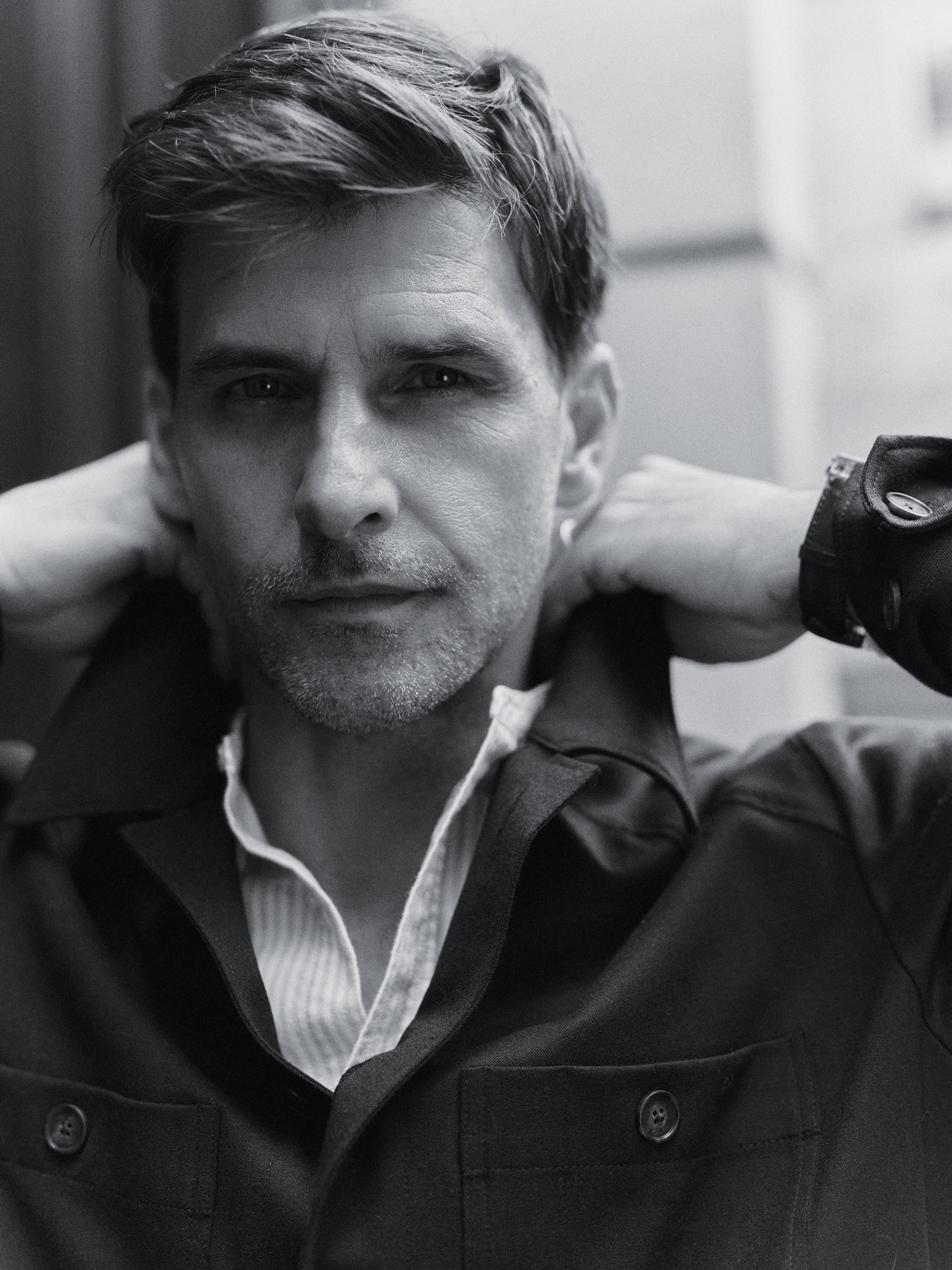
Altea technical-wool jacket, $1,300; Officine Générale cotton shirt, $430.

Model: Johannes Huebl
Senior market editor and casting: Luis Campuzano Hair and makeup artist: Mónica Marmo
Photo assistant: Paolo Caponetto
Executive producer: Rebecca Watson
Production assistants: Nikita Klepach, Marc Gejo Photo director: Irene Opezzo
You may also like.
By Jay Cheses
17/04/2024
17/04/2024
Forever Leather
Furnishings wrapped or accented with classic, cognac-coloured hide create a patina that works with any aesthetic.
Onsen, Gandia Blasco
As the textile industry makes technological advances, traditional outdoor furniture made from iron, wicker and teak seems ever so throwback-y and, dare we say, inconvenient and even uncomfortable. Gandia Blasco’s Mediterranean roots and architectural approach shine in its Onsen collection of garden furniture. Luxe synthetic-leather straps wrapping a tubular stainless-steel structure paired with long-wearing cushions in a similar shade lend new life to the idea of living with leather outdoors. From about $4,425; soft mat about $620, warm mat about $810; Onsen, Gandia Blasco
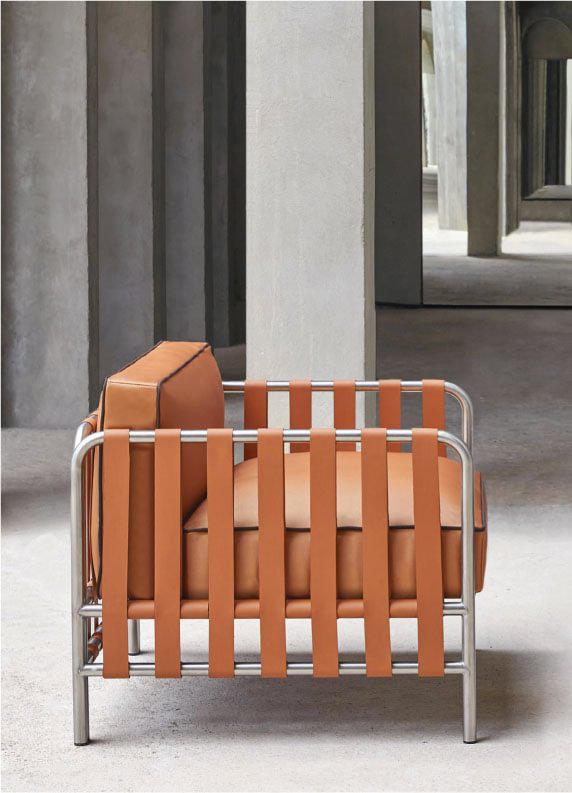
Gabri, Bolzan
The pared-down, leggy look of these tripod tables packs a functional punch without foregoing refinement. Designed by Matteo Zorzenoni for Bolzan and made in Italy, the Gabri’s leather-bound frames with subtle topstitching and semicircular notches recall desktop accessories of an analog age. The dark tops with touches of chalky veining are thoroughly of this century: made from neolith stone, they’re temperature-resistant and waterproof, so go ahead and place your martini where you will. Small, about $1,735; large, about $2,603; Bolzan.com
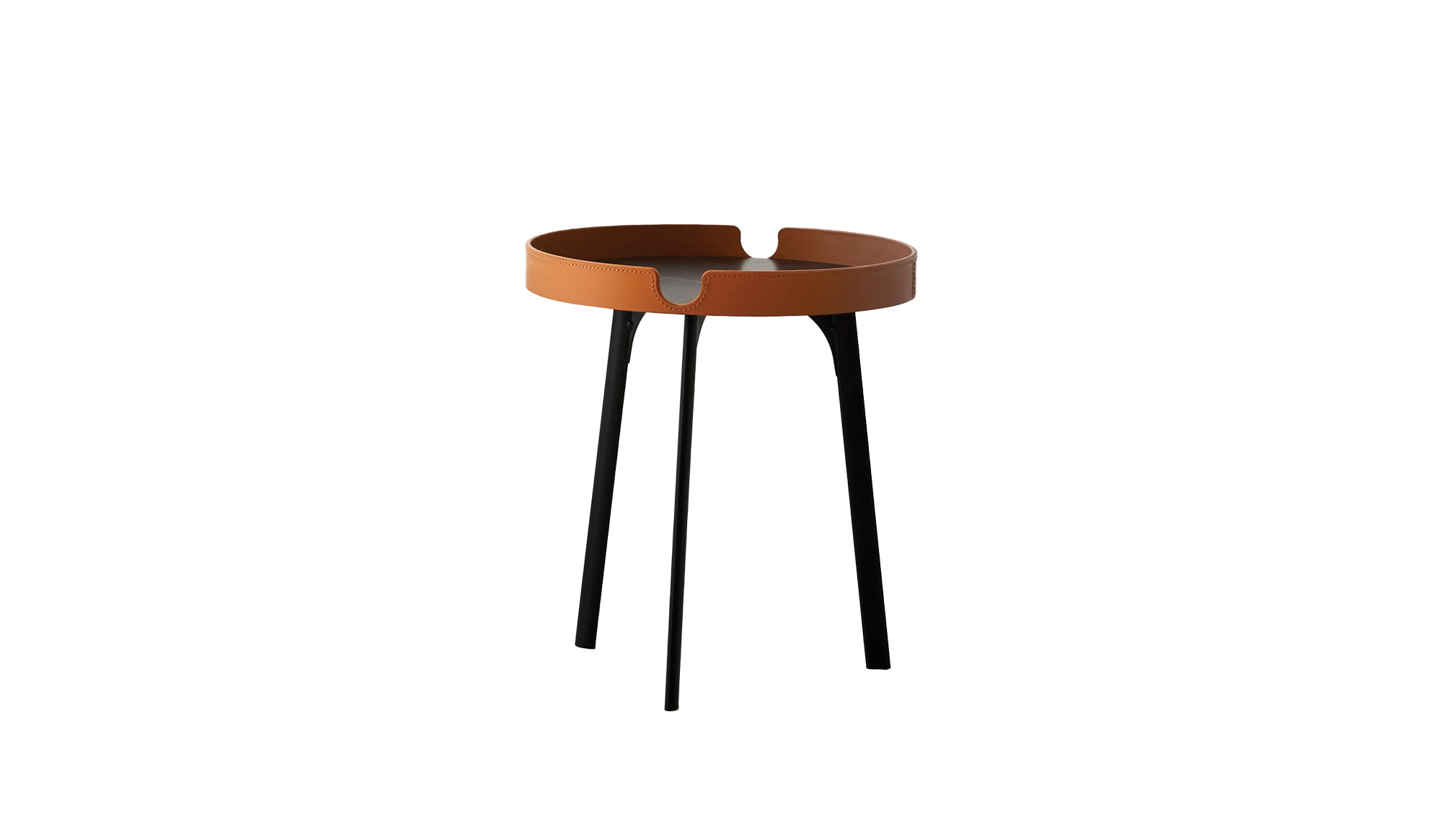
Zenius Lines Giobagnara
Giobagnara’s leather-encased Nespresso machine with vertical- or diamond-quilted detailing is genius in its unfussy application. The leather suits the product; the design channels the look of a luxury Italian sports car. The brand began with the Bagnara family producing household items in 1939, before moving into the luxury realm in the ’70s. Giorgio Bagnara changed its name to B. Home Interiors in 1999 and to the eponymous Giobagnara in 2014. If you like your home appliances with liberal leather detailing, it’s one to follow. About $7,900; Artemest.com

Vague, Tonucci Collection
Fun house–meets-Baroque in this softly symmetrical, wall-mounted mirror that playfully beckons you into another dimension (and will bounce beautiful light around the room). Designed by Viola Tonucci, who took the reins of Tonucci Collection from her father last year, the thick, leather-covered frame introduces architectural interest and a hint of levity to a room, be it traditional or modern. About $8,050; Tonucci.com
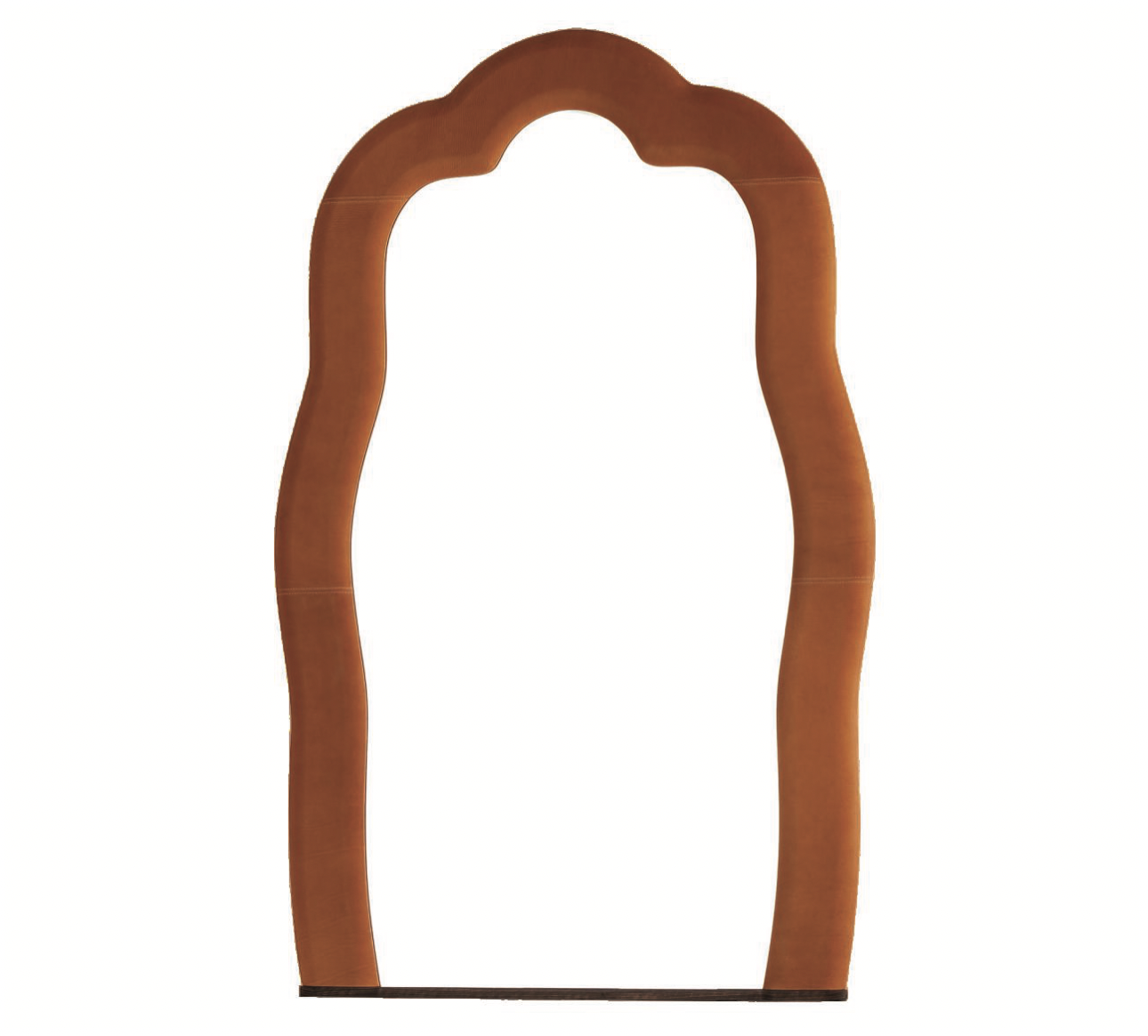
DS-707, de Sede
Given Philippe Malouin’s propensity for experimentation, it’s no wonder that Swiss furniture firm de Sede took a whole new approach in manufacturing Malouin’s DS-707 design. He began by noodling around with foam, folding it this way and that before settling on the serpentine shape. Although the silhouette made de Sede wary—creating it required the team to manipulate leather in a manner that could leave it less supple— the project prevailed with great success. The system itself invites experimentation as customers can configure the components to their heart’s content. From $30,450; deSede.com

You may also like.
By Jay Cheses
17/04/2024
The Perfect Fit
From garden to park, feel the burn with Ethimo’s slick access-all-areas gym.
Not feeling your Peloton?
Hit the gym outside with garden furniture brand Ethimo and Studio Adolini’s open-air “fitness room”, OUT-FIT. Measuring 250 x 250 cm and 280 cm in height, but designed to be adaptable to any open-air location, OUT-FIT is made entirely in teak and rust-finish metal, and comes with a series of equipment for bodyweight training.
Let’s do this. ethimo.com
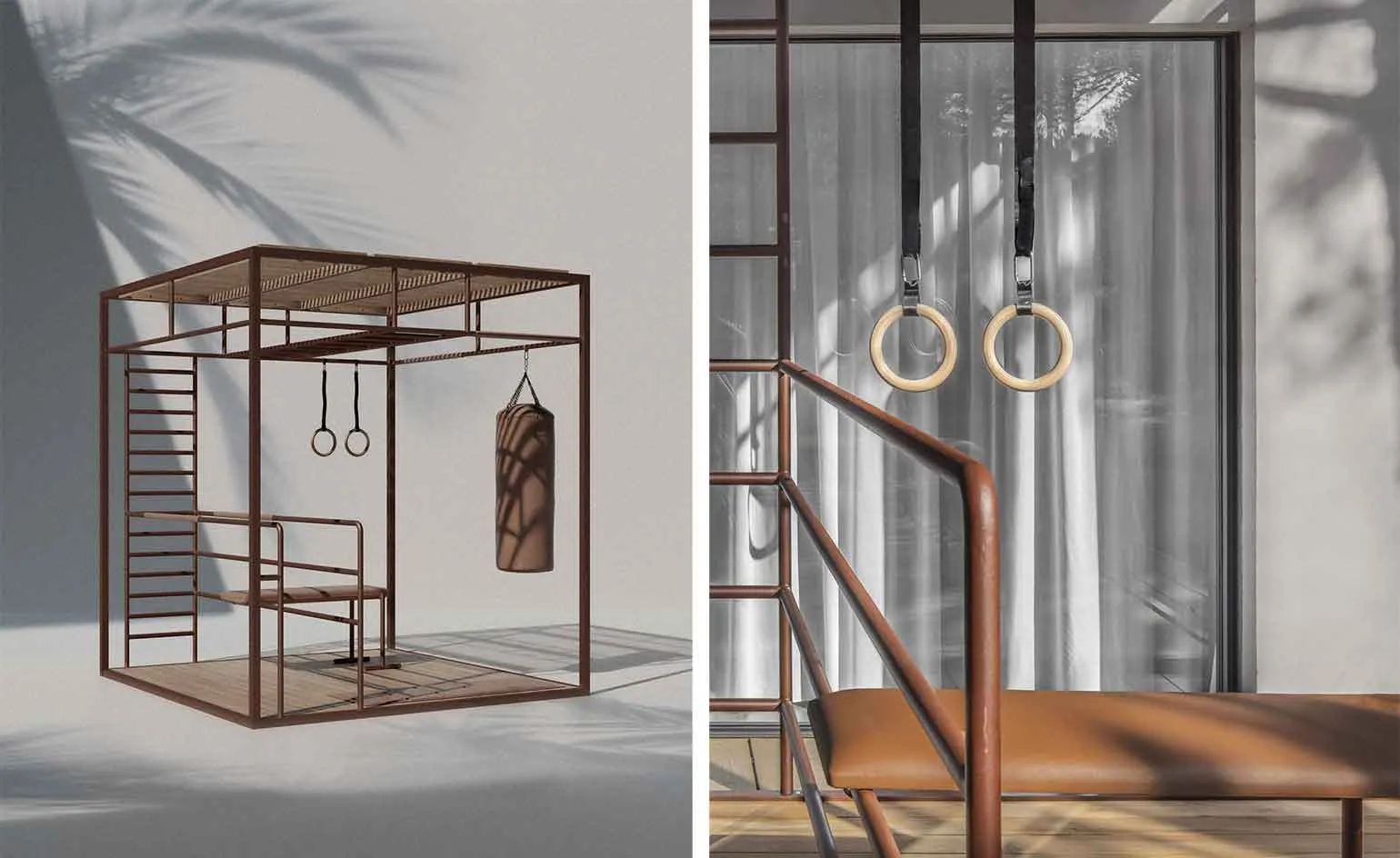
You may also like.
17/04/2024
By Zeb Daemen
18/04/2024
Don’t Ride This Wave ….*unless your name is Robinson, Slater or Moore.
The 2024 Olympic surfing comp will be held at Tahiti’s treacherous Teahupo’o. Going for gold could be deadly.
It’s day two of the 2023 Tahiti Pro Surf Competition. I’m perched on the roof of a VIP boat around 100 metres from Teahupo’o, one of the world’s most dangerous waves. American Surf icon Kelly Slater has just been swallowed by a heaving wall of turquoise water. I’m so close to the action that when he’s finally spit out from the ride, my face gets misted in ocean spray. Below me, Australian Jack Robinson, who will go on to win the event, sits on the edge of the boat performing breathing exercises ahead of his heat. Around me, a flotilla of kayaks, jetskis, surfboards, and small vessels bobs in the channel, acting as a floating stadium for fans.
For many of the competitors—and the 1,400-odd residents of the wave’s namesake village—this year’s contest is a dress rehearsal for an event with a far larger global profile in a few months’ time. While many of the world’s top athletes will travel to France in July for the 2024 Paris Olympic Games, the most talented surfers will head here, to the southwest corner of Tahiti island’s small peninsula, Tahiti Iti, to vie for gold at Teahupo’o in just the second surf competition in Olympic history.
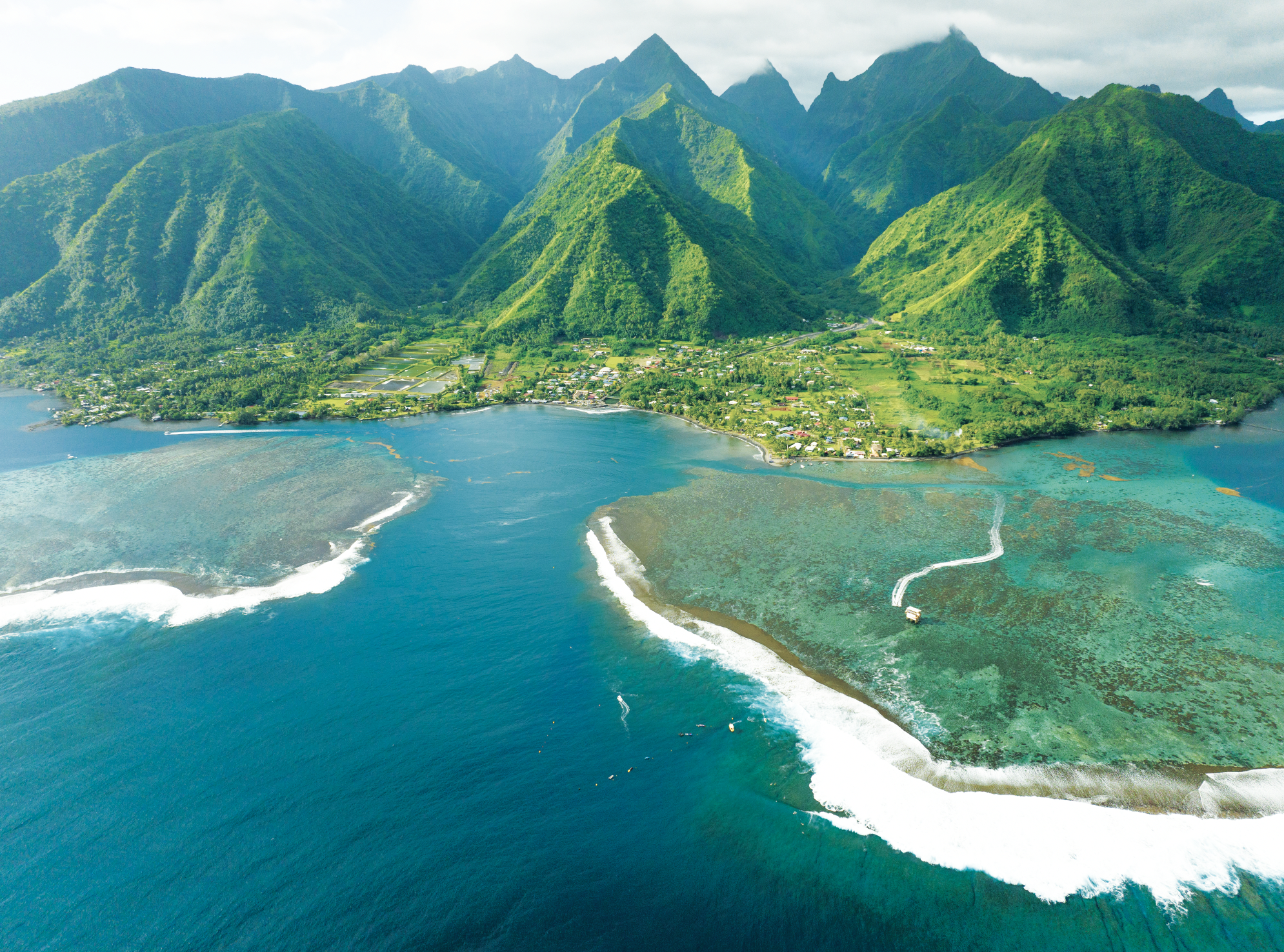
In keeping with the limit of two surfers per gender, per nation, the Australian flag will be flown by Ethan Ewing (No. 2 in the World Surf League rankings at the time of writing) and the aforementioned Robinson (No. 5) in the men’s category, and Tyler Wright (No. 3) and Molly Picklum (No. 5) in the women’s. On this form, hopes of a homegrown medal haul are high.
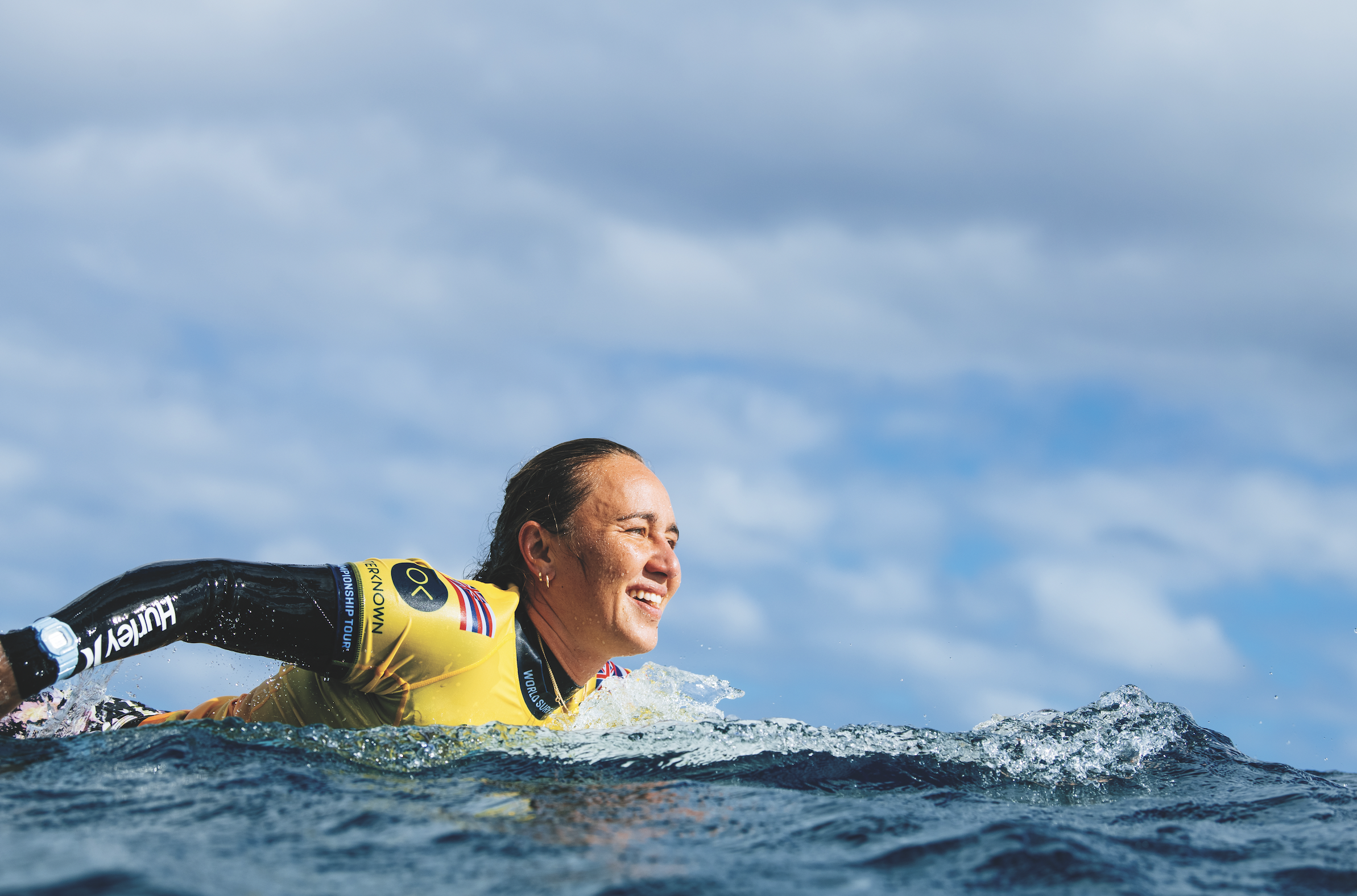
Olympic officials could have chosen a site off the coast of France, such as the surf towns of Biarritz or Hossegor, but historically, Mother Nature brings more sizable waves to Tahiti at this time of year. Plus, surfing has deep cultural ties to the region. The sport originated in Polynesia and dates as far back as the 12th century; it was practiced by Polynesian royalty. Teahupo’o is also a world-class wave that challenges the mental and physical prowess of even the most experienced competitors. The high risk of surfing this spot guarantees thrills that officials anticipate will boost viewership.
Located in the gin-clear waters of the South Pacific with a background of mountains that appear to be draped in jade-green crushed velvet, Teahupo’o (pronounced TAY-a-hoo-poh-oh) is one of the sport’s most infamous swells. (Its name loosely—and cheerily—translates to “place of skulls”.) According to Memoirs of Marau Taaroa, Last Queen of Tahiti, printed in 1893, the first person to surf it was actually a woman from the island of Raiatea, in the 19th century. Not until the 1980s did anyone dare attempt it again, with the first competition hosted in the late 1990s. Former pro turned filmmaker Chris Malloy has called it “the wave that has changed surfing forever”.
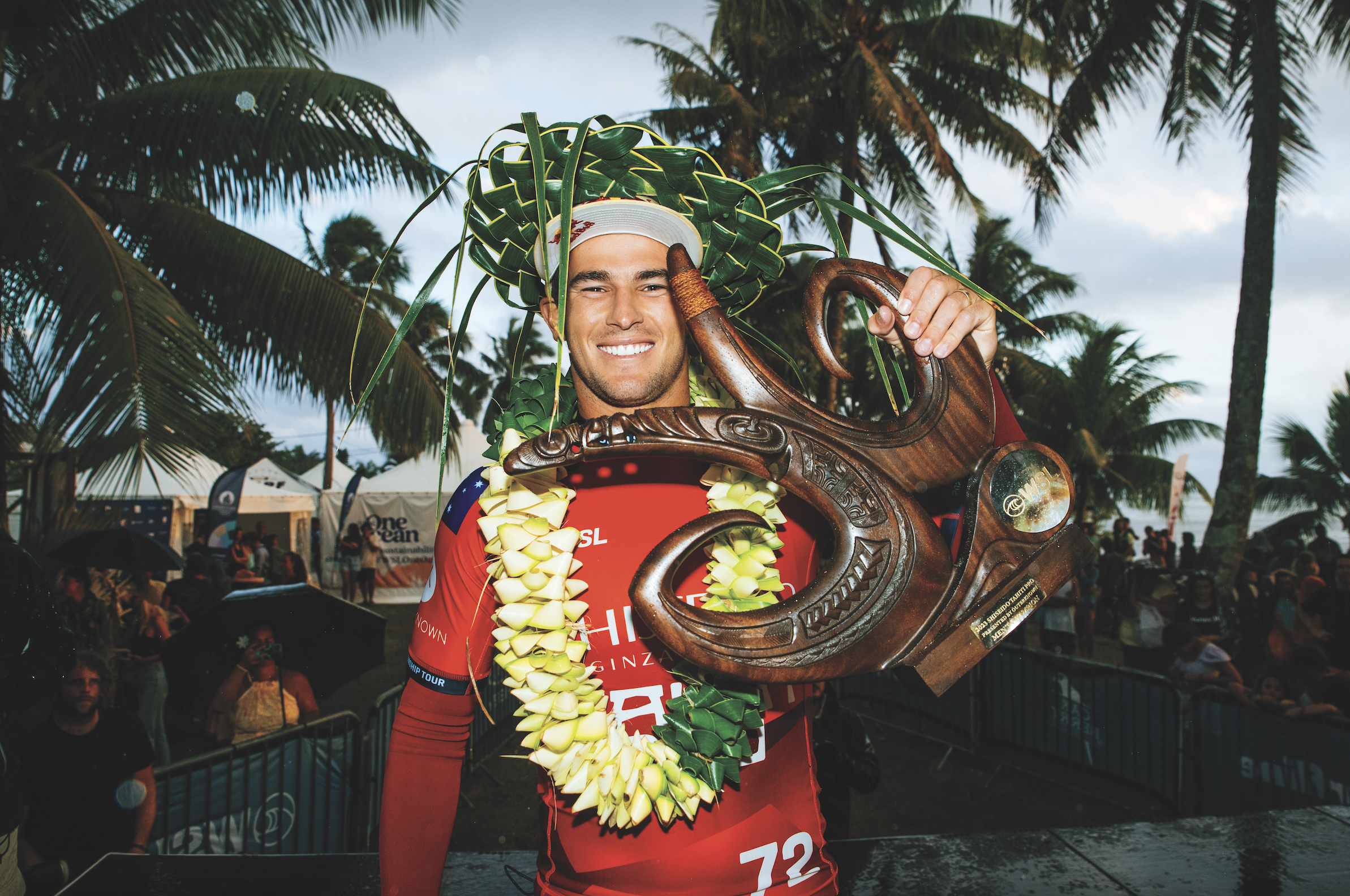
In the right conditions, Teahupo’o can tower upwards of six metres. That may sound small compared to the monster-size Jaws in Maui or Nazaré in Portugal—which can climb as high as 25 metres—but it’s not the height that makes Chopes, as the wave is lovingly called, so special. It’s the weight. When surfers describe a wave as heavy, they’re referring to its combination of a thick lip (the powerful section that starts to curl over) and the amount of water surging behind it.
Like most of the surf breaks found throughout French Polynesia, Teahupo’o is a reef break, meaning the water spills over the surface of knife- sharp coral. Chopes is unique because around 50 metres beyond the reef, the ocean drops more than 15 metres. As swells come toward the shore, the transition from deep water causes them to jack up over the coral before quickly crashing down with tremendous force.
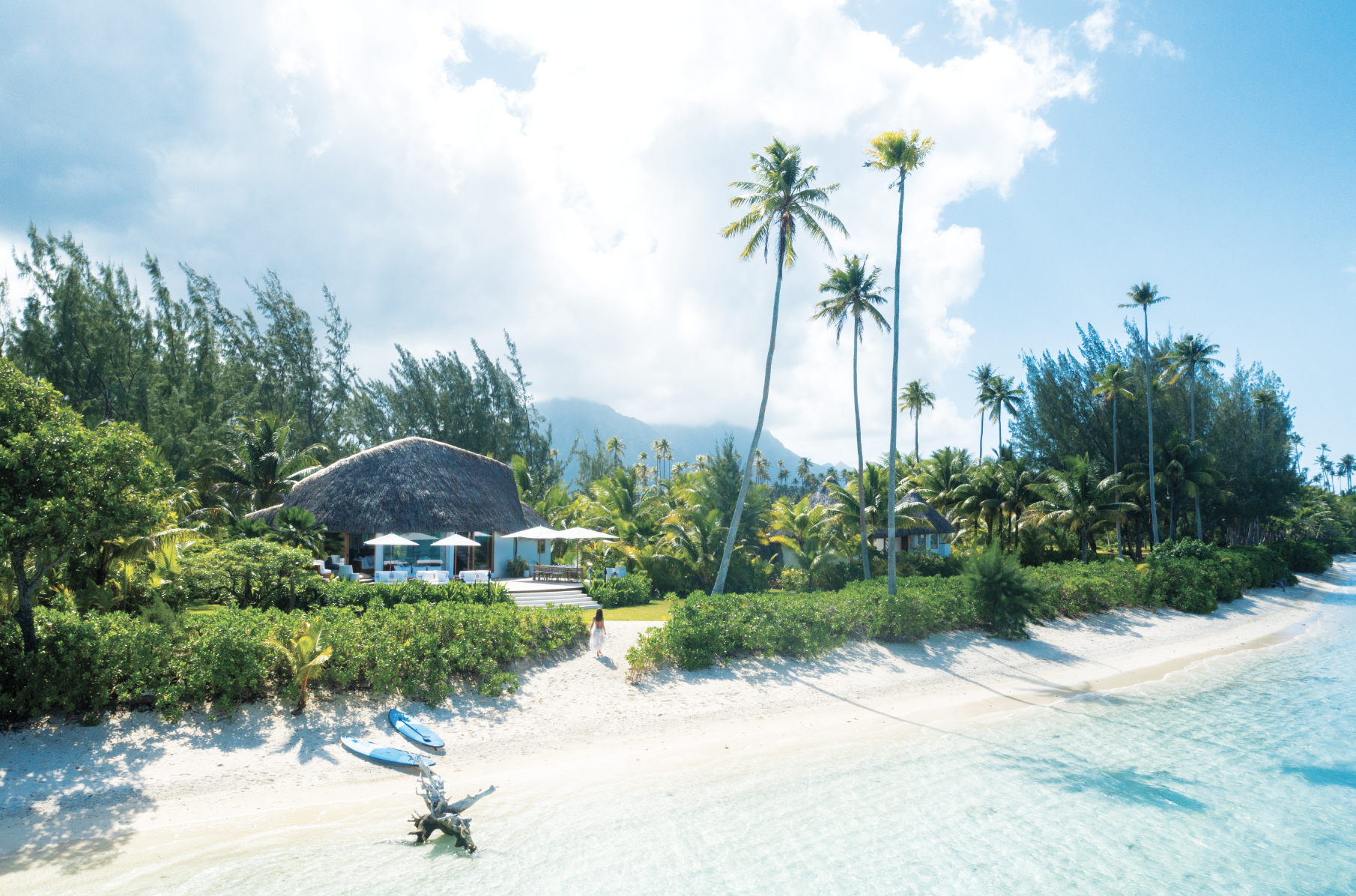
“The reef evolved perfectly in order to absorb the wave’s energy in the shortest distance possible to create this natural wonder,” surf superstar Laird Hamilton tells Robb Report. “It’s a wave that stands straight up and creates a huge barrel. It’s one of the greatest waves on Earth.” In 2000, Hamilton rewrote surfing history when he rode what has been dubbed the Millennium Wave here. Up until then, Teahupo’o was considered too perilous to attempt when it reached a certain size. Hamilton, a pioneer of tow surfing, had a jetski pull him into what is still considered one of the heaviest waves ever ridden. Surfer magazine published a memorable cover of him getting barrelled with just the words “Oh my god…” because the feat was so dangerous.
In places, the reef lurks just 50 centimetres beneath the water’s surface, and the lip can act like a liquid guillotine if it clamps down before a surfer exits the hollow tube of the wave, known as the barrel. Had Hamilton wiped out, he wouldn’t have had an escape route.
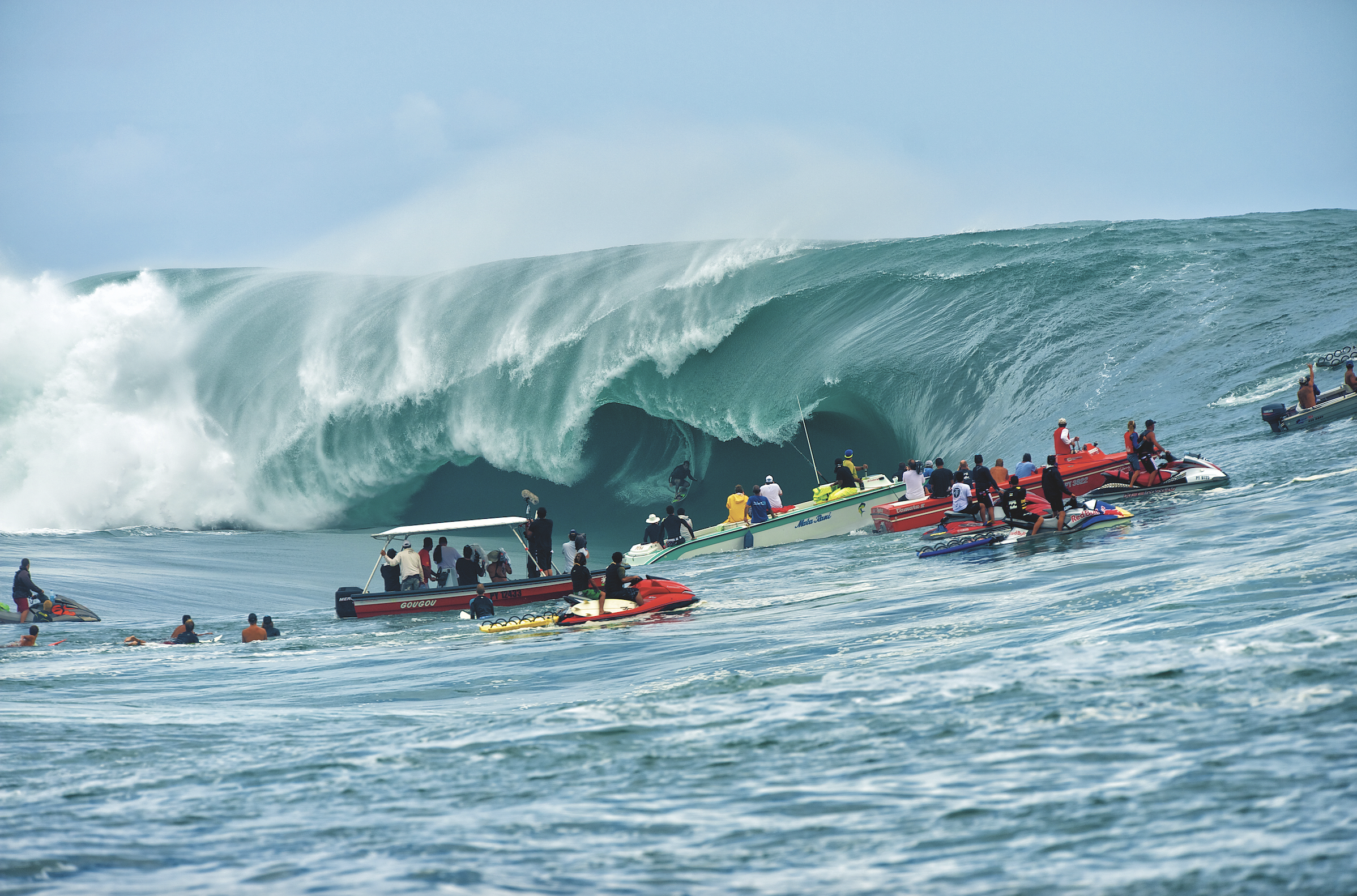
I’m an avid amateur surfer and live on Maui part-time to take advantage of Hawaii’s waves, but even on a gentle day, I wouldn’t attempt Teahupo’o. Teahupo’o village has a water-safety patrol that watches over athletes during contests. Still, a handful of surfers have lost their lives here, and many go home with serious battle wounds. In August last year, during a practice session for the Tahiti Pro, Ethan Ewing fractured two vertebrae in his back after crashing out in solid, but average, six-foot waves—an accident that arguably cost him top spot in the world rankings.
In classic gung-ho-surfer fashion, though, the Queenslander was back in the water at Teahupo’o three months later, one eye still resolutely fixed on Olympic glory. “Definitely more anxious than excited heading back to Tahiti after hitting the reef really hard last time,” he posted on his Instagram account. “Teahupo’o is still seriously intimidating, but I feel like I’ve made some steps in the right direction.”
Unless you surf, Tahiti Iti probably isn’t on your radar. Starting from the largest town of Taravao, the south-coast road ends at the village of Teahupo’o, hence its nickname, the End of the Road. The community, just 500 metres from the wave, is the antithesis of the glitz and glamour of Paris or even nearby Bora Bora. This is a slice of tropical paradise that has somehow evaded development. To reach the contest each day, I park at the end of the road, then walk over a one-lane bridge and follow a sandy path that passes local homes.
“All of your senses are heightened here,” former world surf champion C. J. Hobgood tells me when I run into him at the event. “It’s not just the wave—it’s the island. Everything looks five- dimensional. Mountains seem stacked on mountains and glow a vivid green. You turn to the right and these bluer-than-blue waves are breaking. Then a rainbow might appear in the sky. The raw beauty is overwhelming to take in when you first arrive.”
Surfers talk of feeling the mana, a Polynesian word for spiritual energy, here. Jack Robinson even referenced it after his victory in the Tahiti Pro. It may sound woo-woo, but I undoubtedly feel something when I arrive after a 90-minute drive south-west from the hotel-lined harbour of Tahiti Nui, the island’s larger, more developed area. Tahiti Iti’s empty beaches and waterfall-riddled lush interiors remind me of a quieter, more vibrant version of Hana, a little corner of Maui with just one hotel, a handful of restaurants and kilometres of untamed nature. In an era of over-tourism, this kind of purity comes with a trade-off: You won’t find five-star hotels or celebrity-chef restaurants on Tahiti Iti. In fact, it doesn’t have any hotels at all—and won’t be opening any ahead of the Games.
Locals have been adamant that Olympic infrastructure remains minimal. The proposed construction of a three-storey judging tower directly on the reef at Teahupo’o has been a major concern among residents and environmental groups. The one Olympic improvement locals welcome is a new bridge that will connect to the beach in front of Chopes.
I check into Villa Mitirapa, newly built in the rural community of Afaahiti, a 25-minute drive from Teahupo’o. Giant carved wooden doors lead to an open-air living room, a plunge pool and views of the lagoon, and every evening a chef drops by with a delicious preparation of the catch of the day. In the village of Teahupo’o, you’ll find family-owned guesthouses such as Vanira Lodge, a collection of three bungalows tucked up in Te Pari (“the cliffs” in Tahitian), as well as A Hi’o To Mou’a, a B&B run by the proprietor of hiking outfit Heeuri Explorer.

Pro surfers are typically hosted by the same local families year after year. (During the Olympics, athletes will be housed on a ship anchored in a sandy area offshore to avoid damaging the seabed.) Hobgood tells me he made visits to his “adopted Tahitian family” for nearly two decades. For the past five years, he has come to Teahupo’o to help coach reigning Olympic champ, Hawaiian Carissa Moore and now stays with her adopted family. “They take us on hikes you’d otherwise never know how to access and have rich stories about the place,” he says. “And everything they prepare for us at meals, from the passion-fruit jam to the chilli sauce, is homemade.”
The next big thing being “adopted” by a Tahitian family is hiring Raimana van Bastolaer as your guide. For a first-time visitor, Tahiti Iti can be far harder to access than other islands, which is perhaps why so few people explore the peninsula. You need a local to reveal where to go, and van Bastolaer makes you feel like an insider.
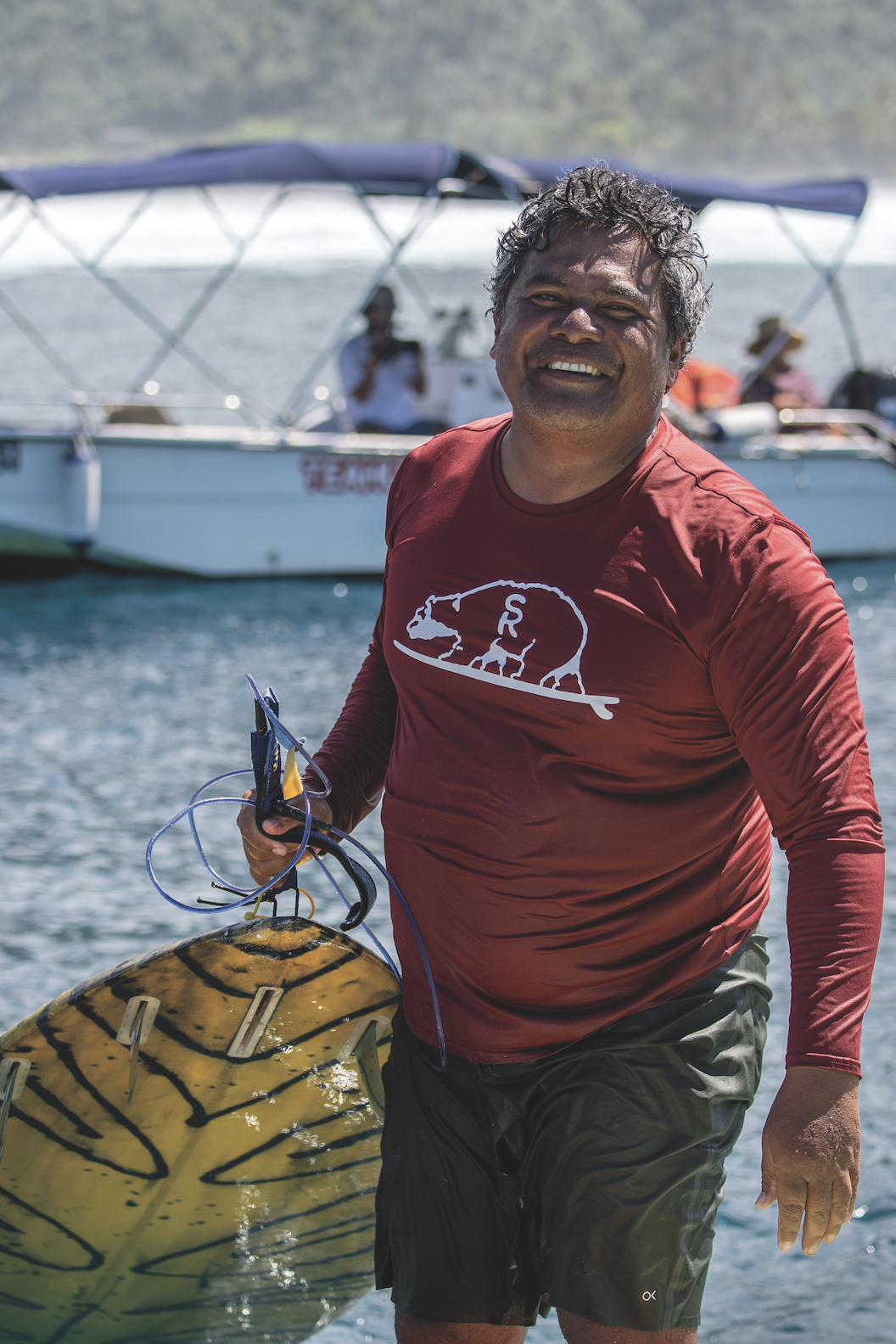
Born and raised in the capital of Papeete, he was one of the first locals to surf Chopes, and over the years, his intricate knowledge of the wave has earned him the nickname the Godfather of Teahupo’o. He was out in the channel with Hamilton the day the American had his historic ride, and John John Florence and Kelly Slater are among the surfers who stay with him when they’re in town. Van Bastolaer even did a stint as a part-time coach at Surf Ranch, Slater’s central California wave park. Thanks to his non-stop pursuit of a good time, everyone wants to be around him. Now 48, the stockily built, dauntingly athletic van Bastolaer has become the go-to guide for visitors ranging from Julia Roberts, Margot Robbie and Jason Momoa to Mark Zuckerberg and Prince Harry. “I get to yell at princes and CEOs,” he jokes. “I’m out in the water with them telling them when to pop up and paddle. And they love it.”
Tahiti’s unofficial ambassador lives and breathes surfing. Through his company, Raimana World, he takes just one or two guests at a time on private curated surf tours throughout French Polynesia’s two central archipelagoes: the Society Islands (which are home to Tahiti) and the Tuamotus; he plans to add Fiji soon. Some of his clients base themselves on their own yachts or charter one through Pelorus. The yacht specialist’s Tahiti portfolio includes the 77-metre La Datcha, which has two helipads, a submersible and a spa.
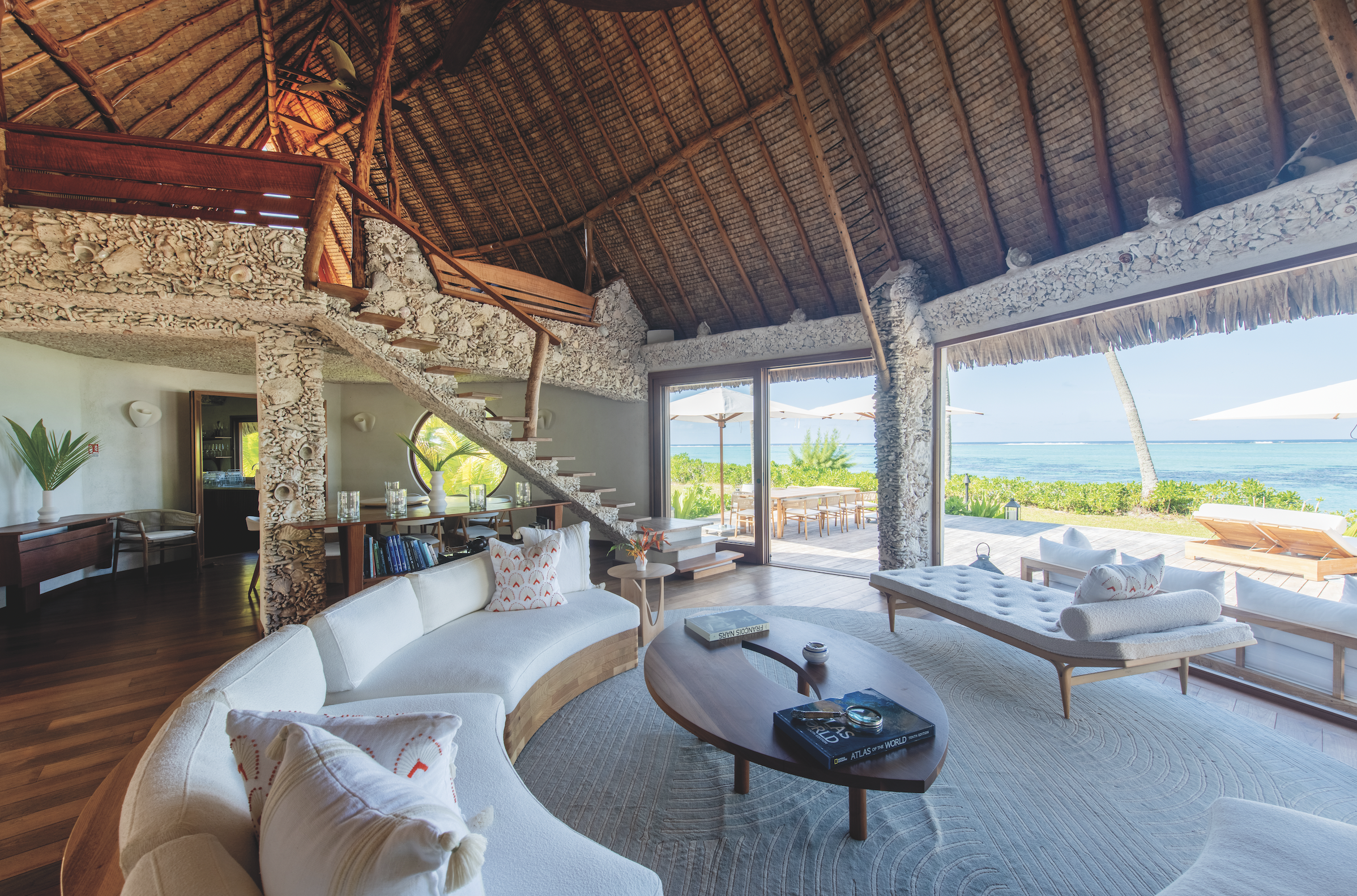
Other clients he directs to exclusive properties, such as Motu Nao Nao, a new 25-hectare private-island resort in the cerulean lagoon of Raiatea with just three enormous villas crafted from coral, wood, and shells. A roving bar bike delivers custom cocktails to guests as they explore the island, and the French chef, inspired by Asian and North African cuisine, prides himself on never repeating a dish, no matter how long guests stay.
Van Bastolaer gets only one or two clients a year experienced enough to be coached into a barrel at Teahupo’o. “Most just want to get close to the wave to feel its energy and hear it roar,” he says. “That’s enough to give you an adrenaline rush.” Locals are incredibly protective of their surf spots, and van Bastolaer stays away from popular breaks. “Out of respect, I don’t take clients out if there are more than a few people in the water. Luckily, I have access to toys that get us away from the crowds.” He island-hops by helicopter, yacht or jet boat, then transports guests to surf breaks via high-speed RIB (rigid inflatable boat) or jetski. Most days average two to three hours of surfing, and he sprinkles in other activities such as snorkeling, whale watching (July to November) and barbecues at his house.
Papara, the beautiful black-sand beach where van Bastolaer honed his skills, 45 minutes from Teahupo’o, will be turned into a fan viewing zone with jumbo screens during the Olympics. Papara is one of the most forgiving surf breaks in Tahiti, and I head here to longboard. La Plage de Maui, a simple restaurant with sandy floors, plastic chairs and lagoon vistas, becomes my daily après-surf spot. Located in West Taiarapu, 40 minutes east of Papara, with nothing but coastal road and local homes in between, this humble spot sits next to Maui Beach, one of the only white-sand beaches on the whole island. This stretch may be Tahiti Iti’s best-kept secret.
After a barefoot walk along the shore, I don’t bother to put my shoes back on before heading into the restaurant, where servers proudly sport Tahiti Pro T-shirts and posters of pros hang on the walls. At a waterfront table, I spot rainbow-hued parrotfish and Moorish idol in the glassy lagoon. I’m pretty sure I could live on a diet of local Hinano beer and poisson cru, Tahiti’s national dish of raw fish marinated in lime juice and coconut milk. My final day, I ask my waitress if she’s concerned the Olympics might overexpose this laid-back, oft-forgotten enclave. She just laughs in reply.
On the drive back to my villa, I remember what van Bastolaer told me when we were introduced a year ago: Tahiti Iti’s specialness is lost on those seeking overwater bungalows or nightlife. It’s a place you can’t know in a day. The island reveals itself to you slowly. And even when van Bastolaer is your host, he won’t give away all its secrets.
You may also like.
The Boldest, Most Exciting New Timepieces From Watches & Wonders 2024
Here are the highlights from the world’s biggest watch releases of the year.
Watches & Wonders, the world’s largest watch show, is in full swing in Geneva. The highly anticipated cascade of new releases is marked by confident individual brand identities — perhaps a sign that watchmakers are done scrambling through the violent collision of restricted supply and soaring demand for high end watches. All seem to be back on solid footing.
Steady confidence is a good thing. Consider Jaeger-LeCoultre offering up traditionally styled grand complications or Vacheron Constantin revamping the classic Patrimony with smaller cases and vintage-inspired radially brushed dials. Consider TAG Heuer celebrating the 55th anniversary of the square Monaco with a skeletonized flyback confidently priced at US$183,000, or Moser similarly showing off a fascinating skeletonized tourbillon in its distinctive 40 mm Streamliner at US$86,900. IWC has leaned hard into their traditionally styled Portugieser line, including an astounding Eternal Calendar complication. We find the storied French houses of Cartier, Chanel and Hermes blurring the lines between jewelry and watchmaking with the technical prowess and artistic whimsy that originally earned these brands their exalted place in the hearts and minds of sophisticated aesthetes. Confidence abounds in 2024.
We could go on and on with examples, but the watches below will demonstrate that for 2024 the big watch brands dared to be themselves, which appears to have given them the confidence to take some seriously compelling horological risks. We have separate coverage of off-show releases and, of course, Patek and Rolex, so keep and eye out for those.
—
A. Lange Söhne Datograph Perpetual Tourbillon Honeygold Lumen
Chanel Bobbin Cuff
You may also like.
17/04/2024






